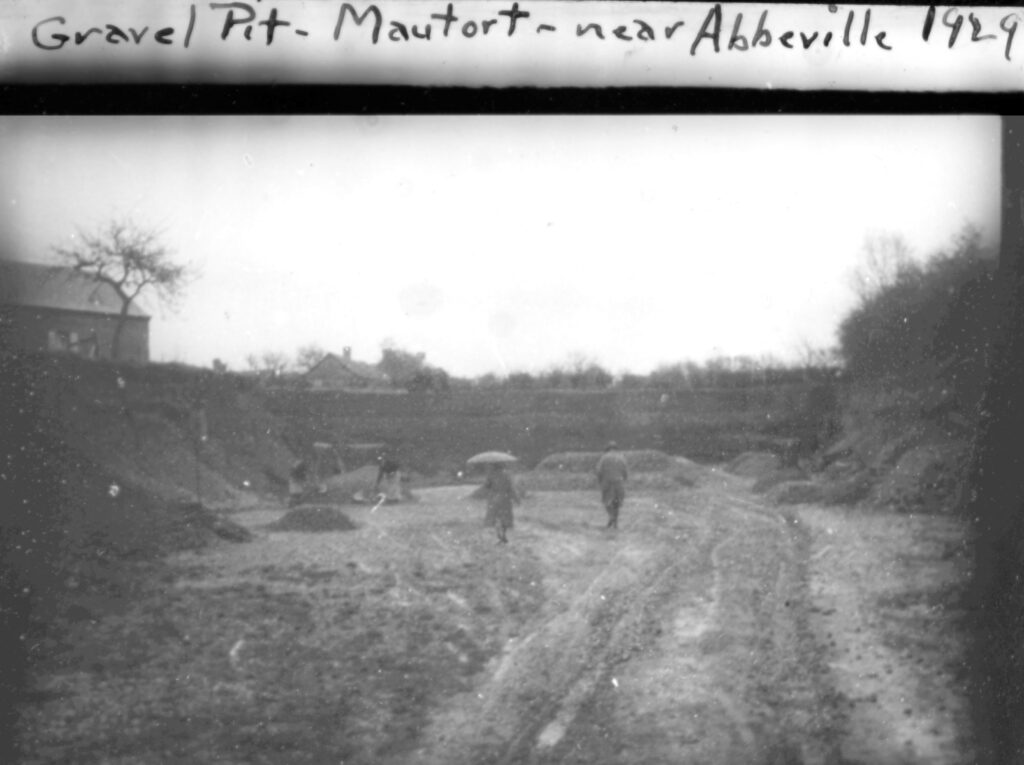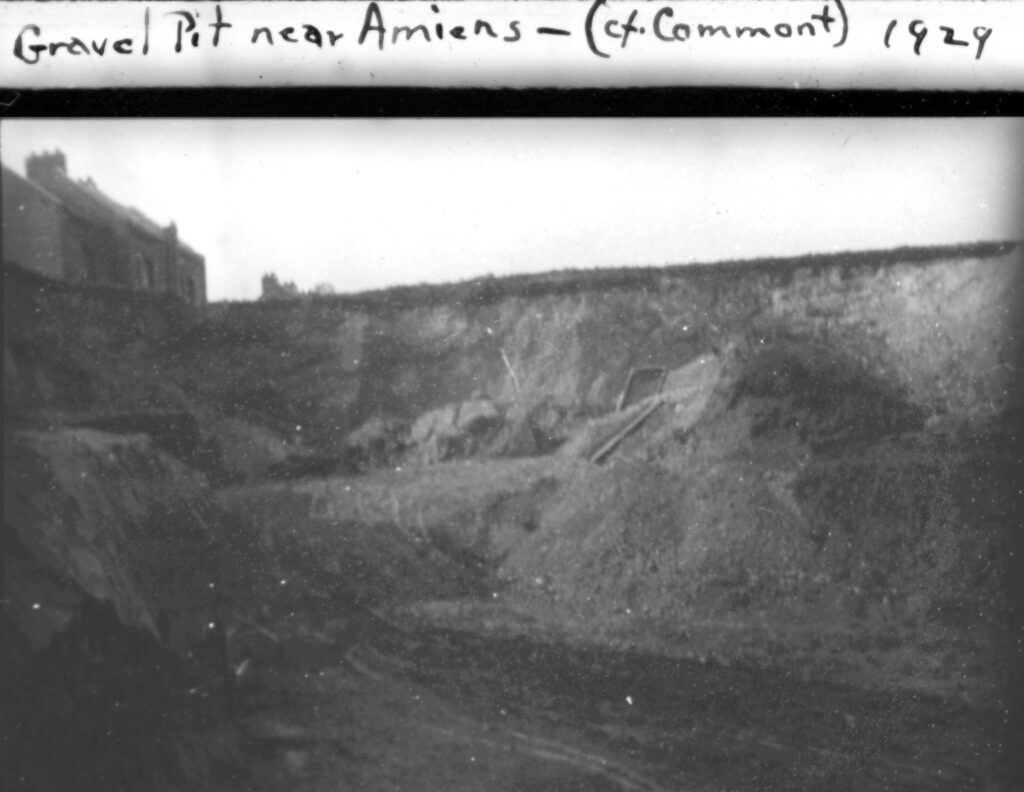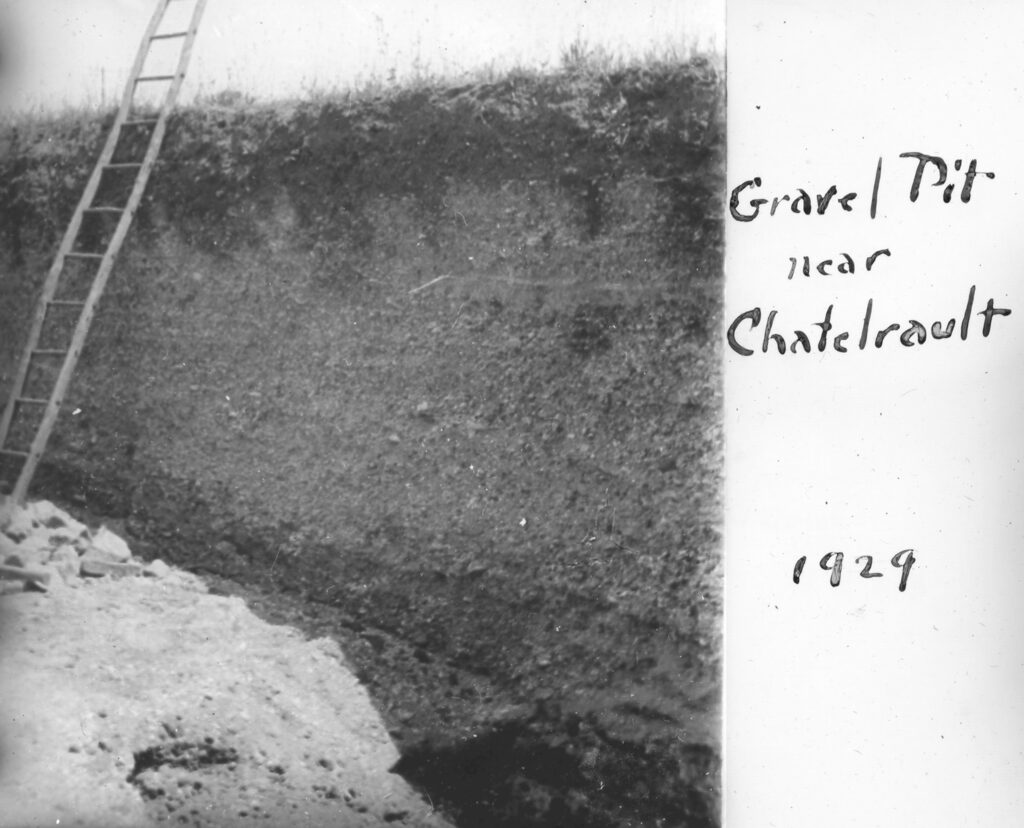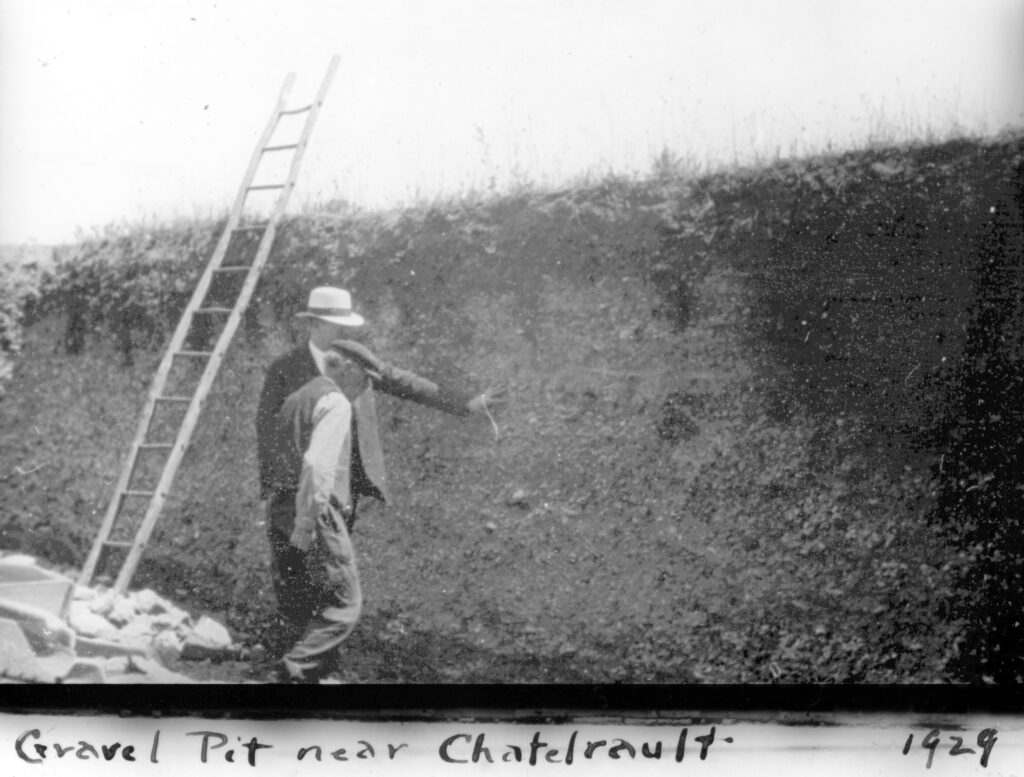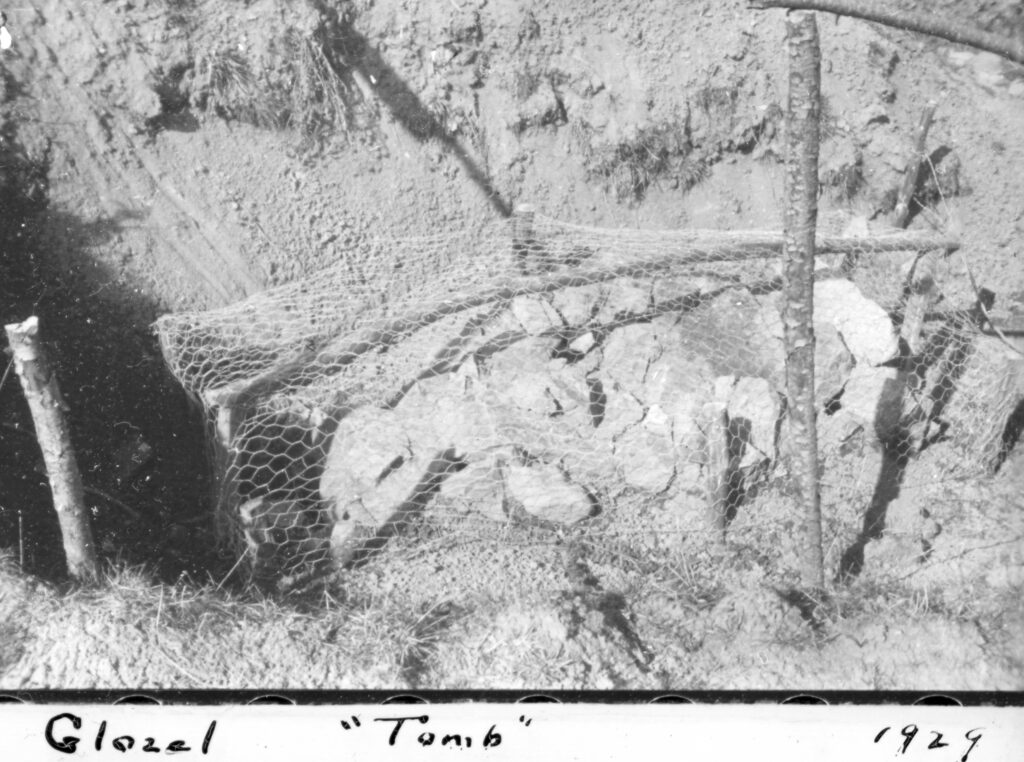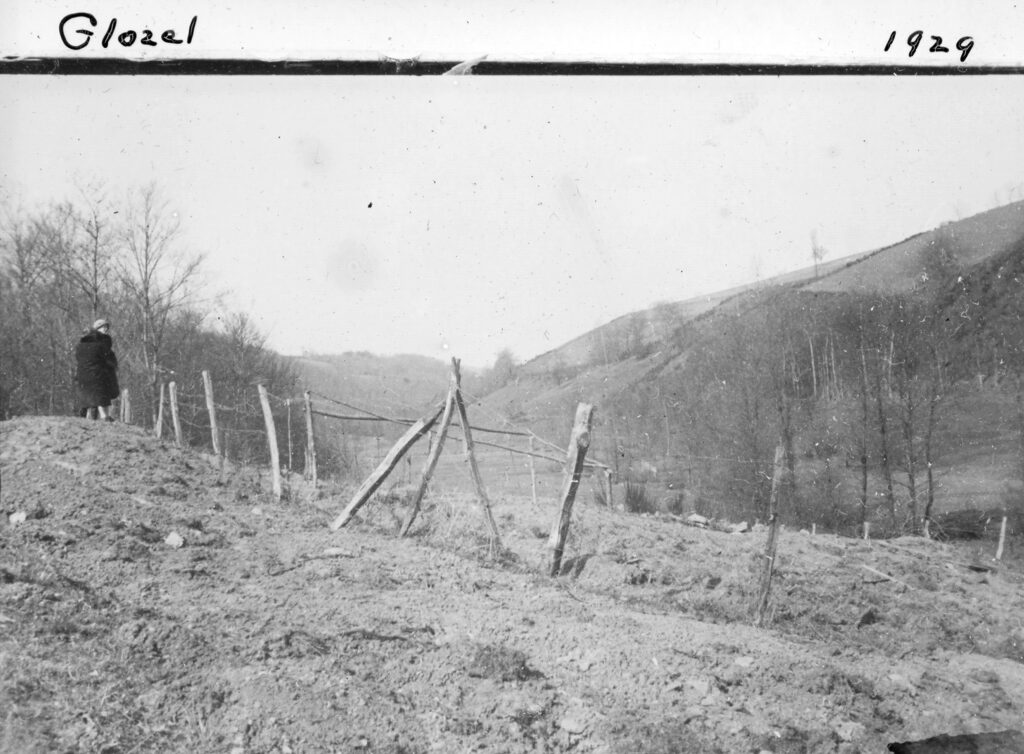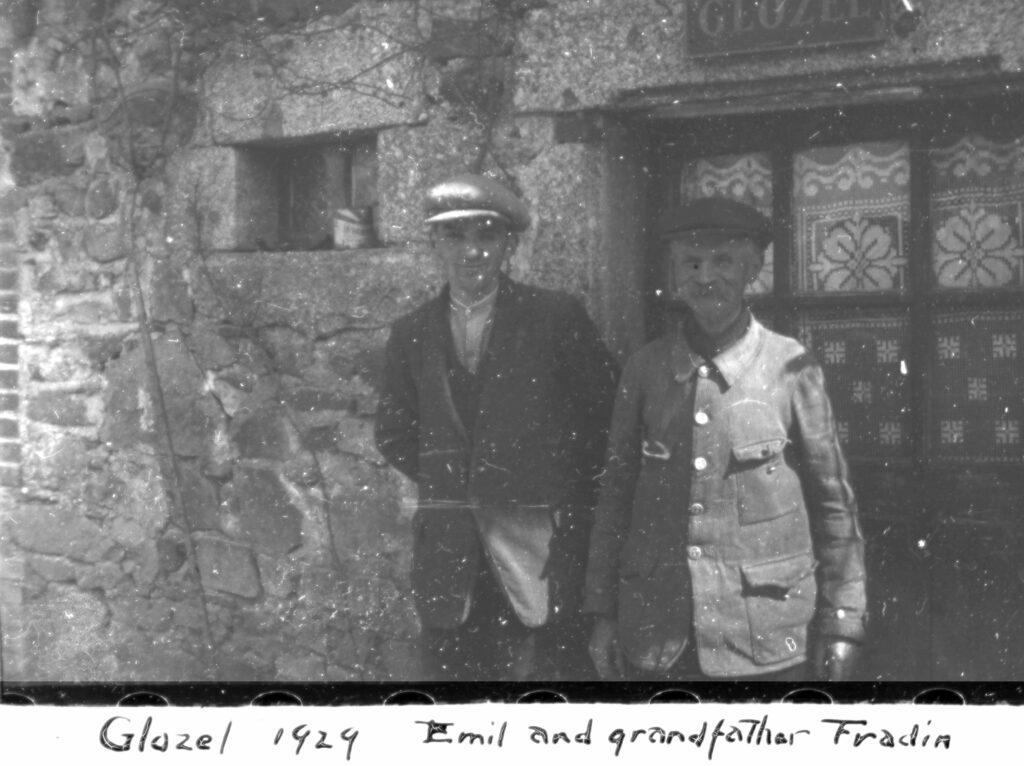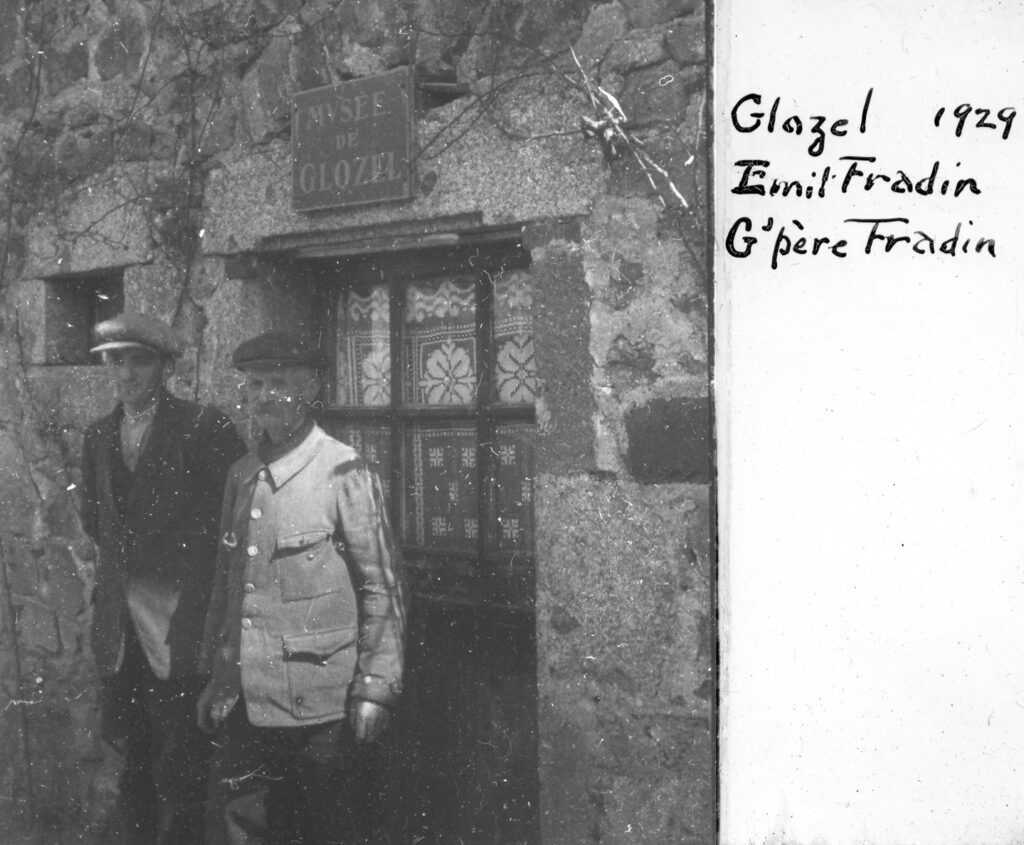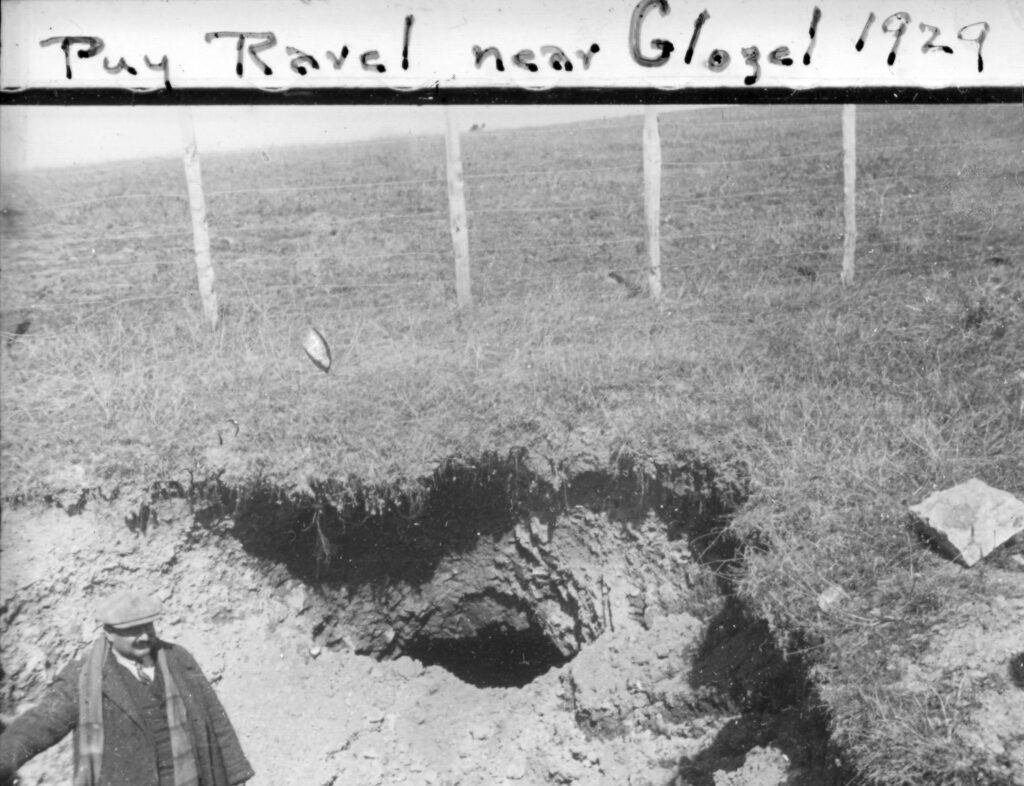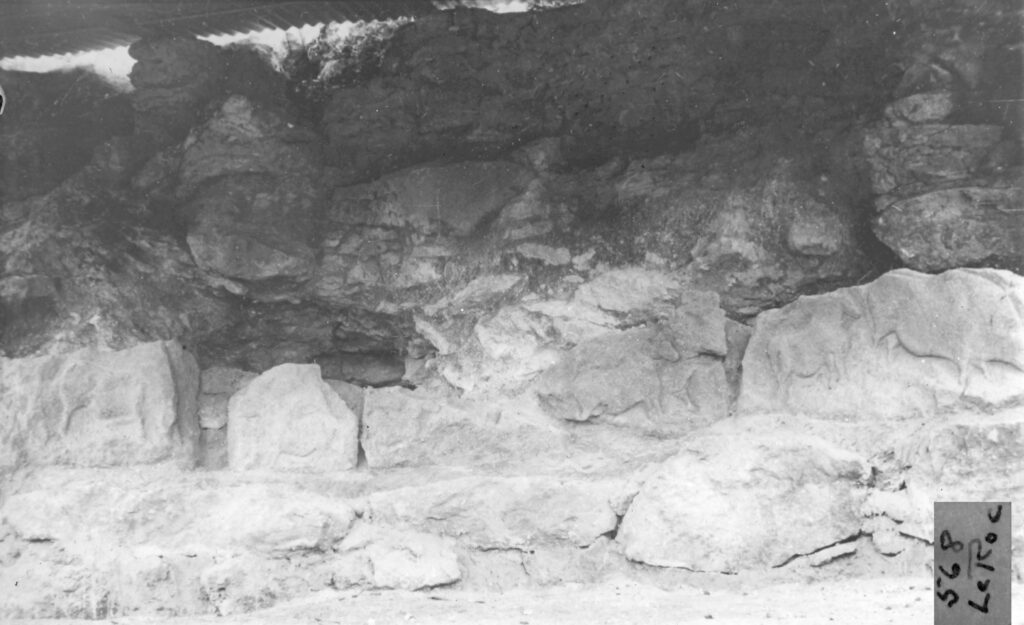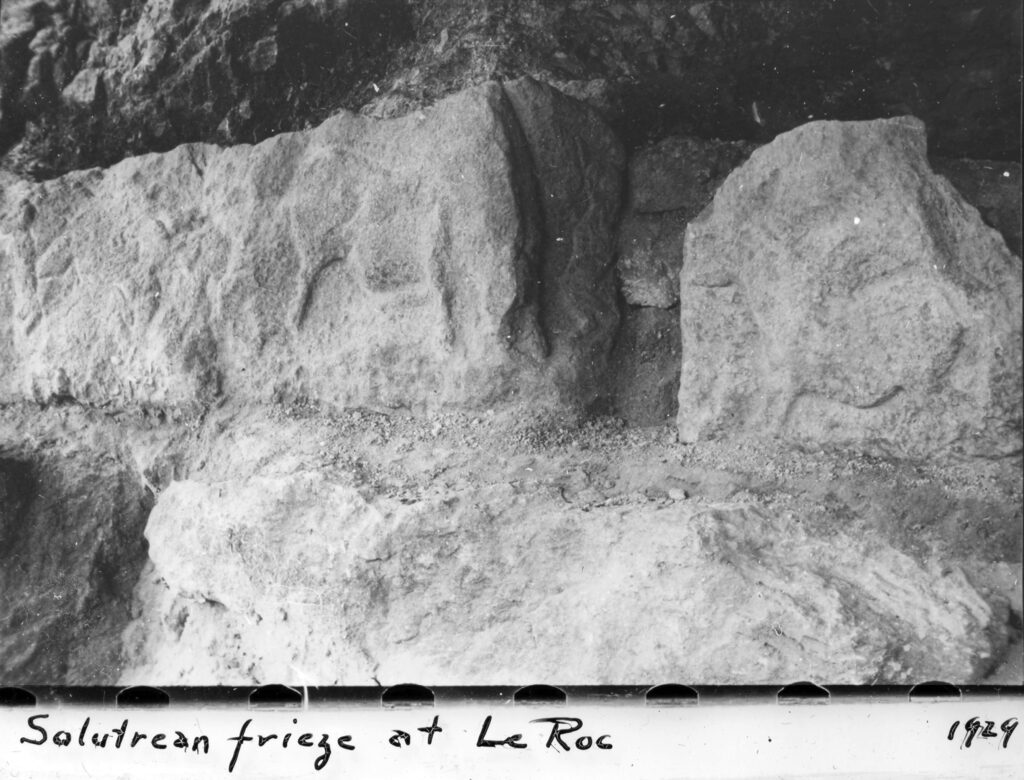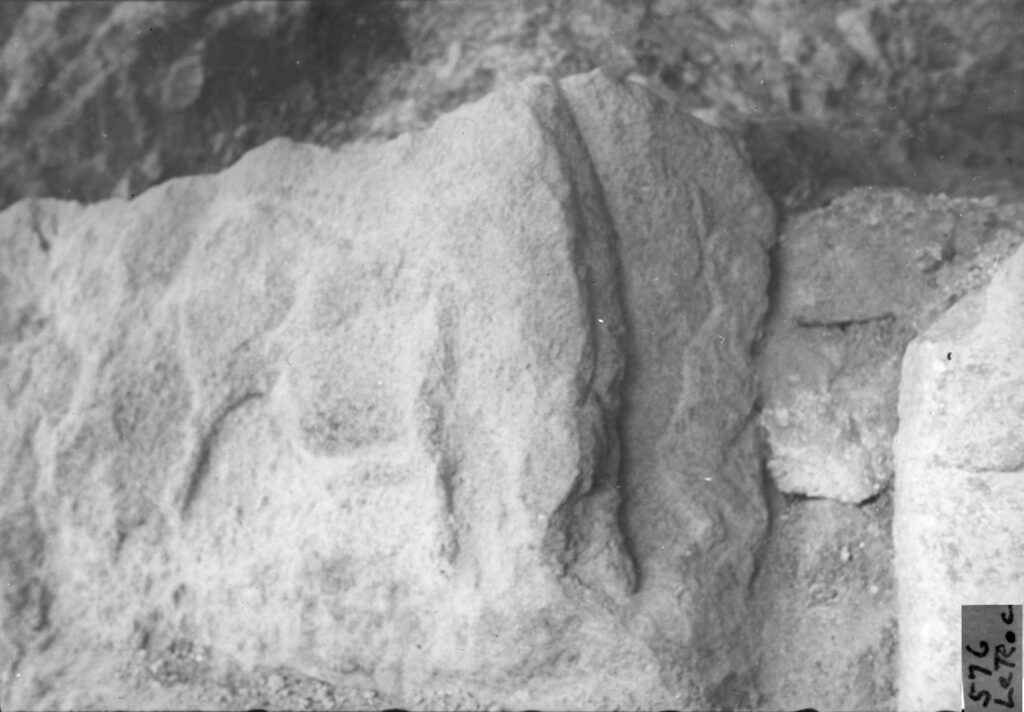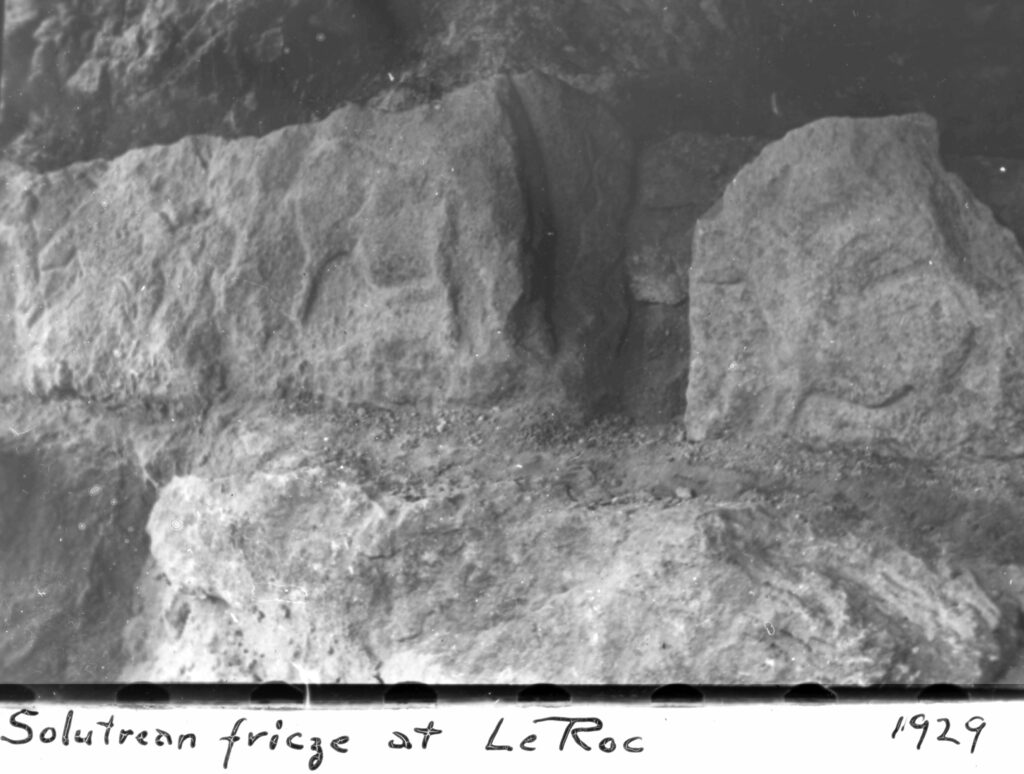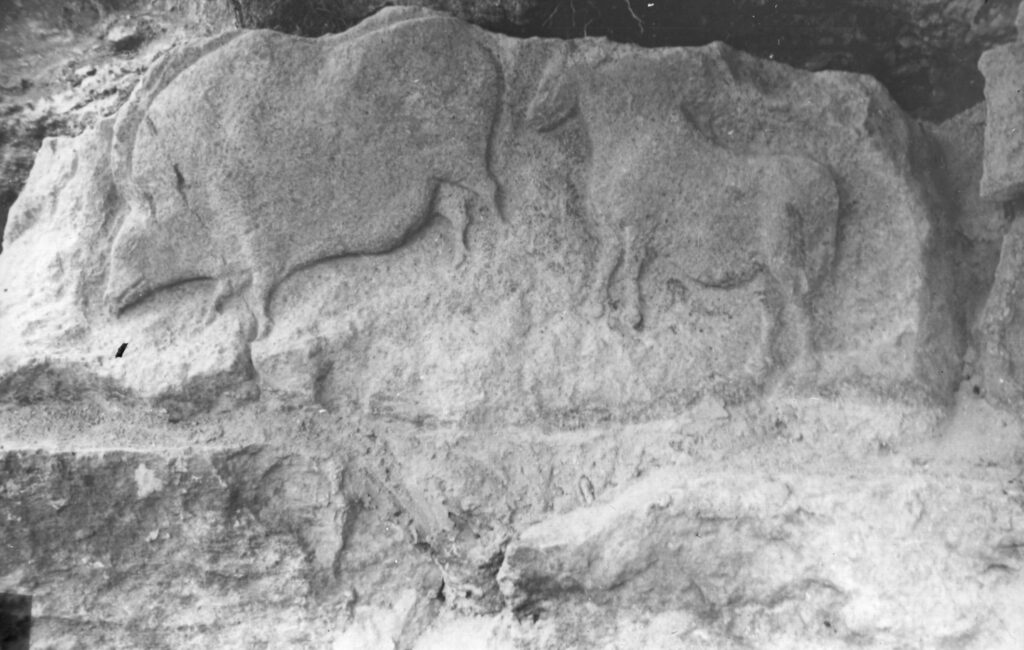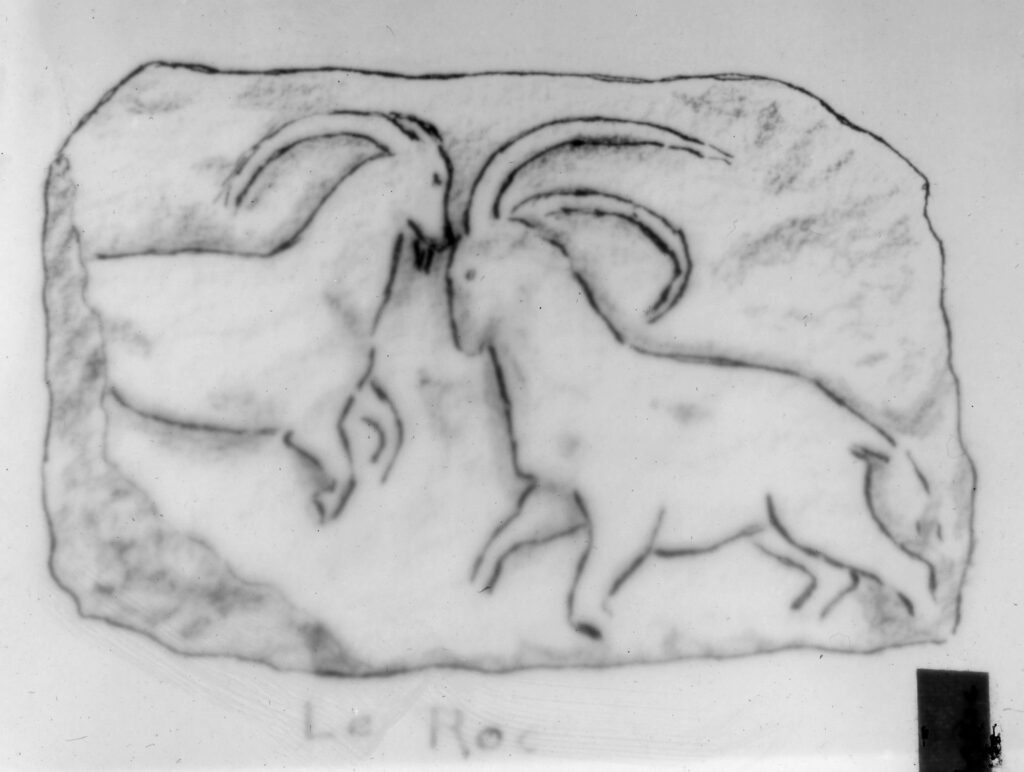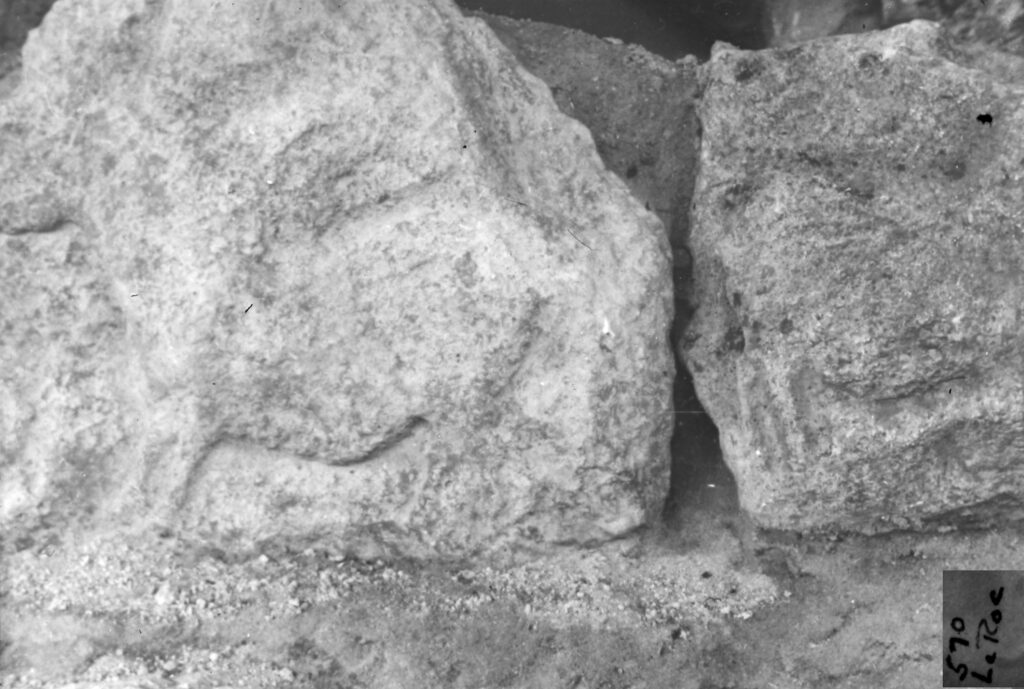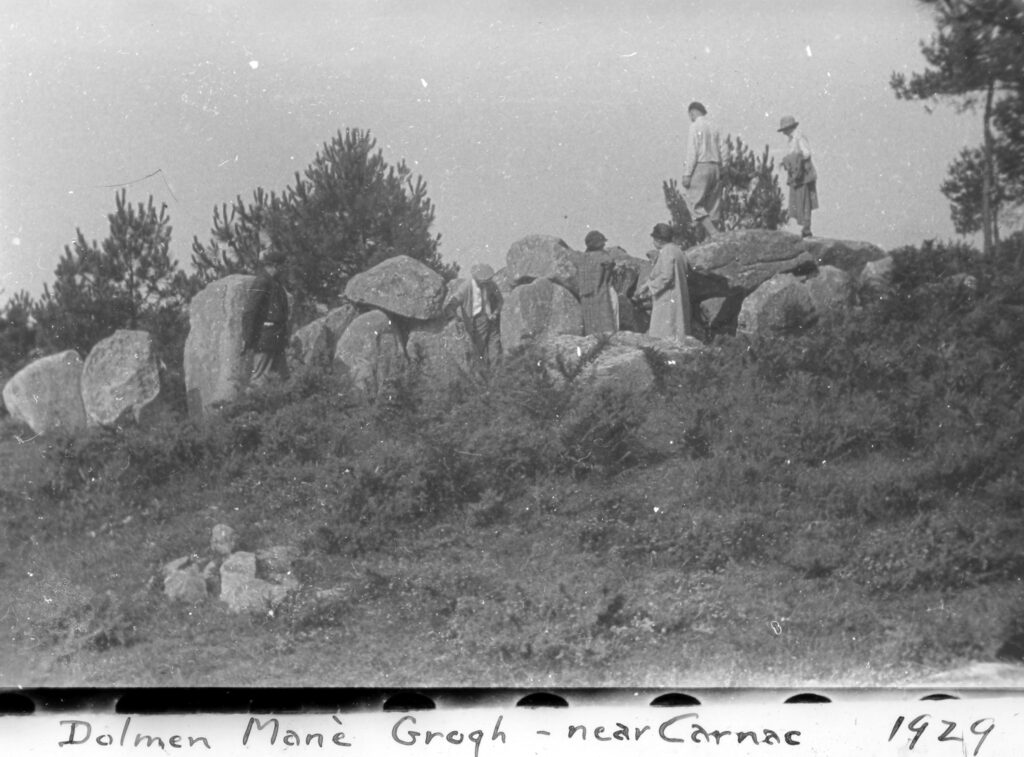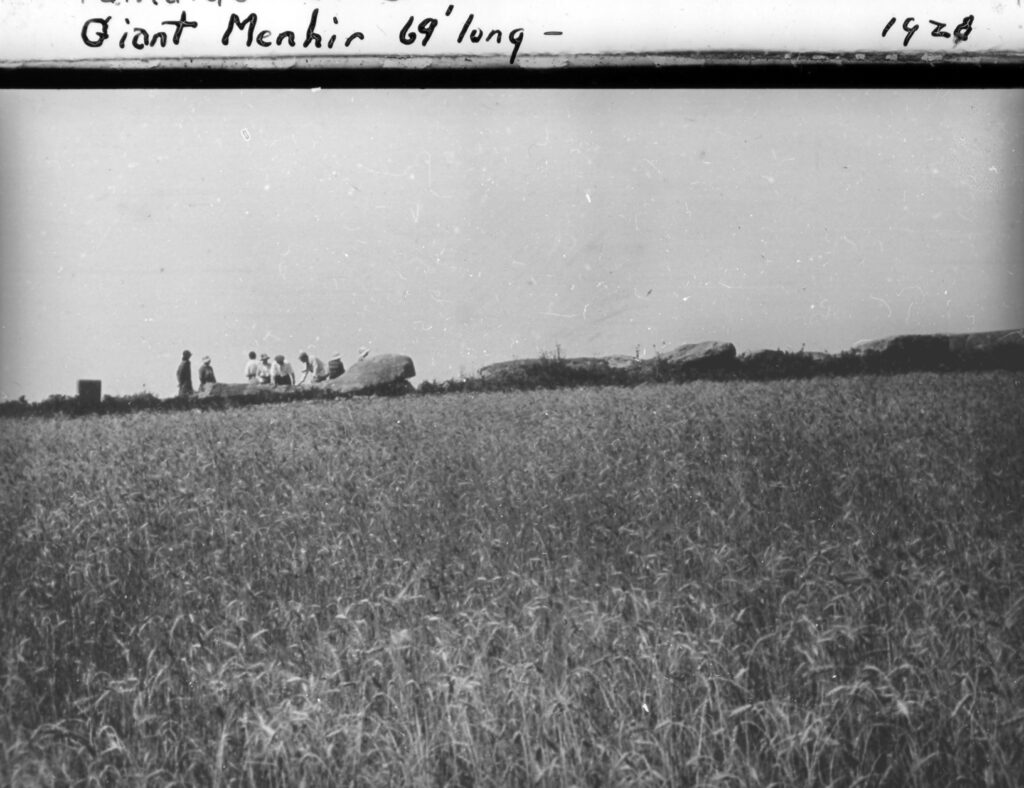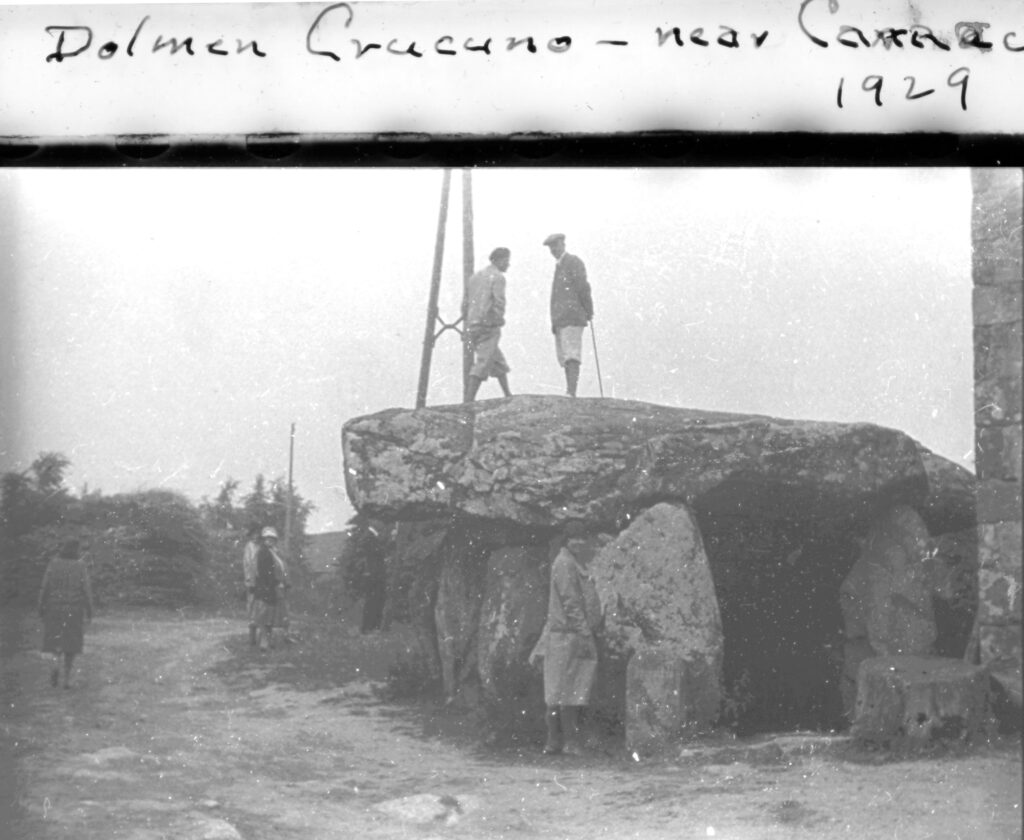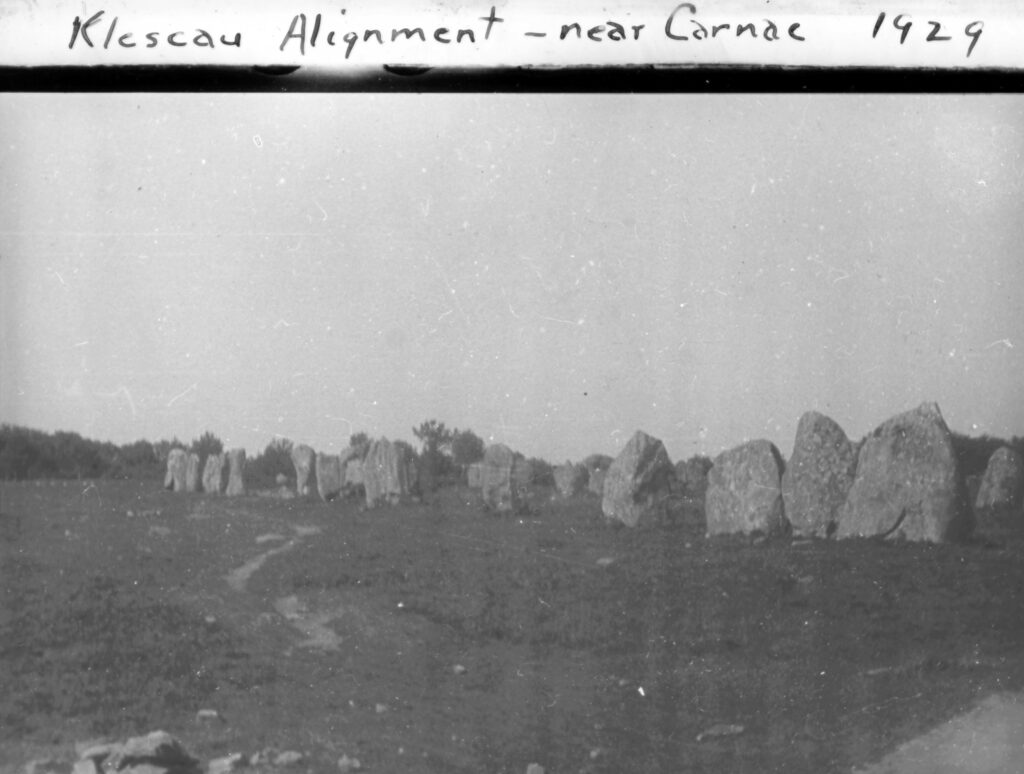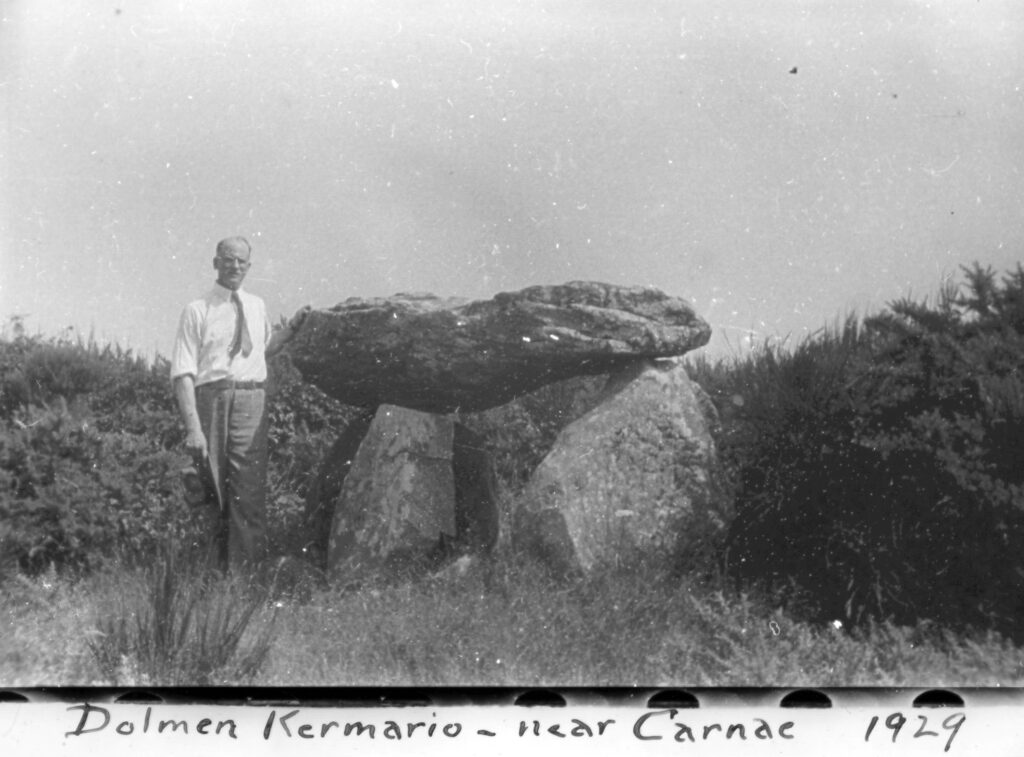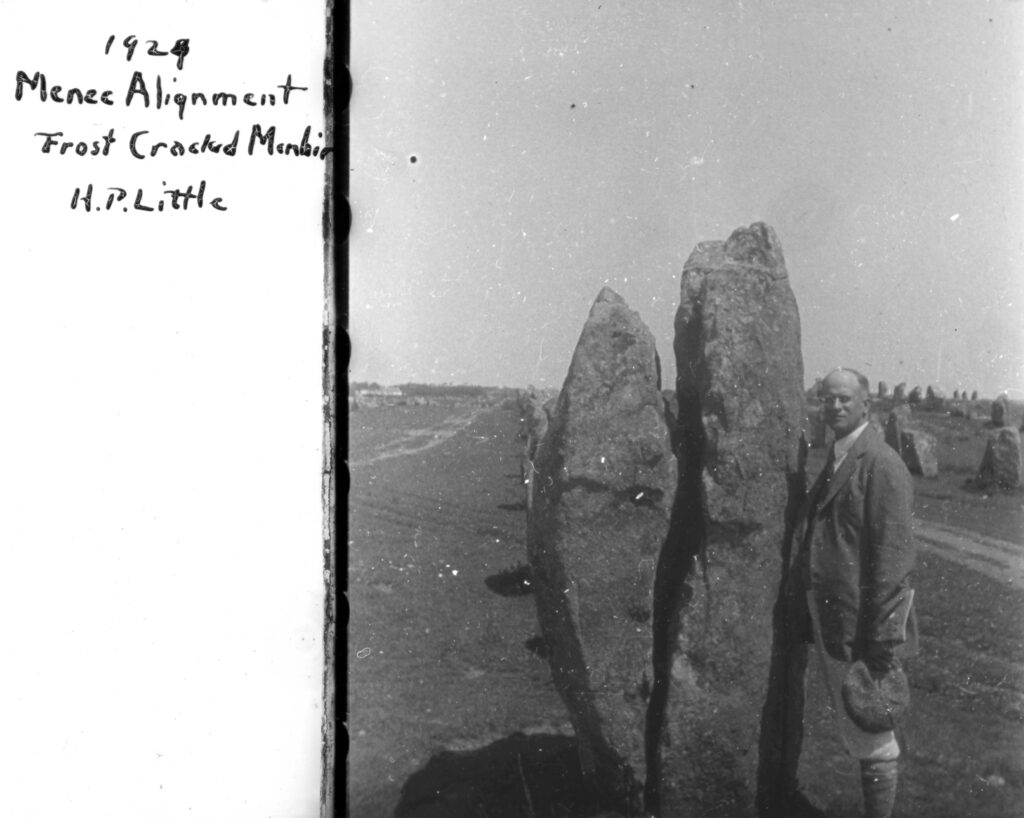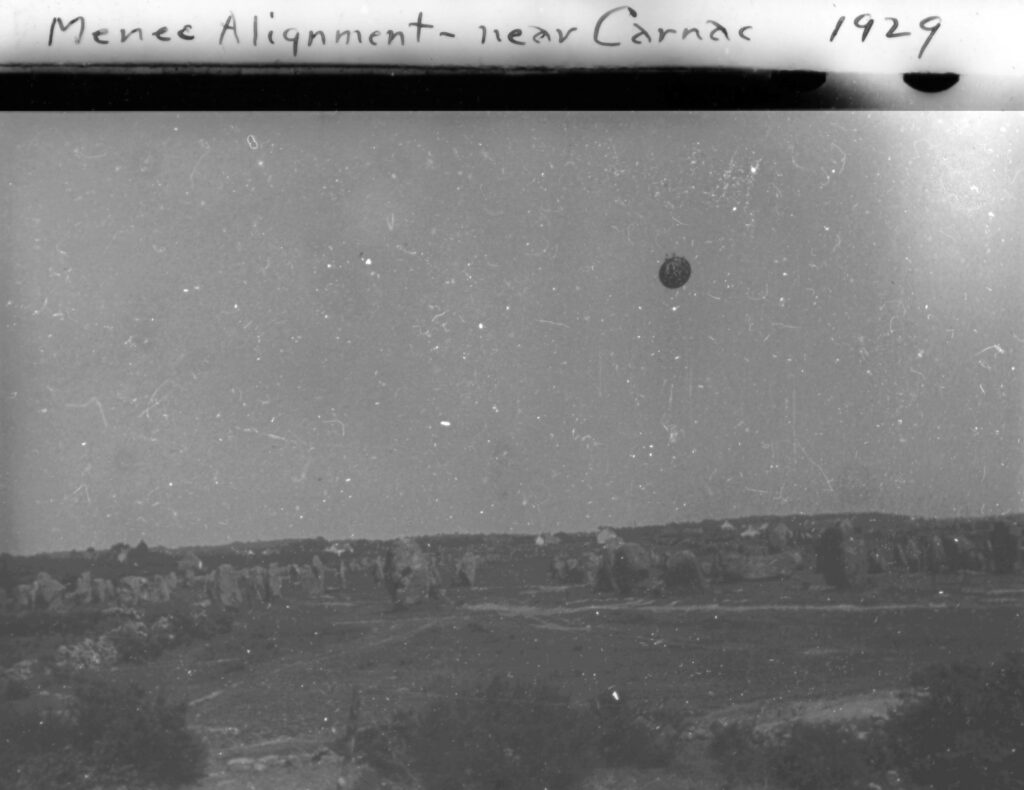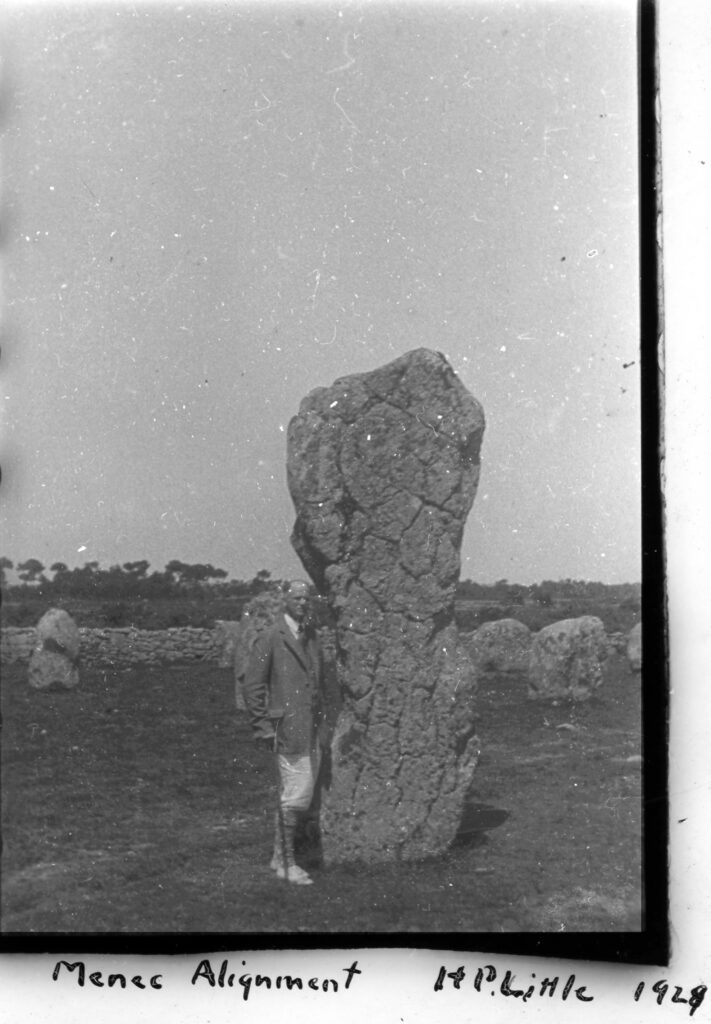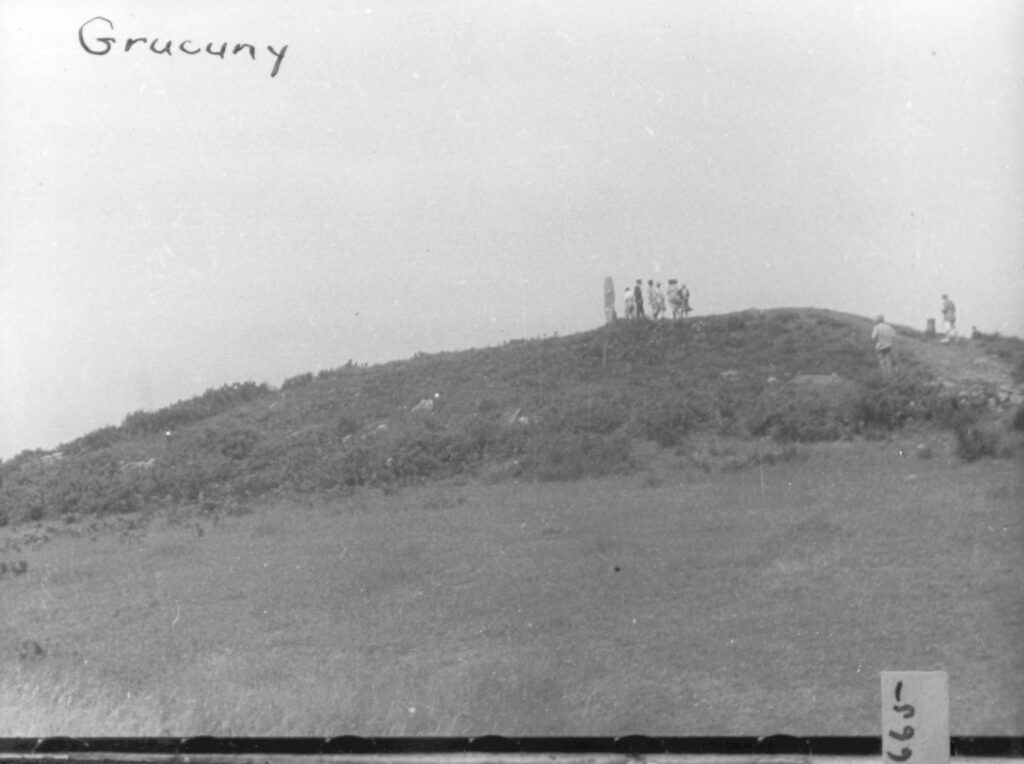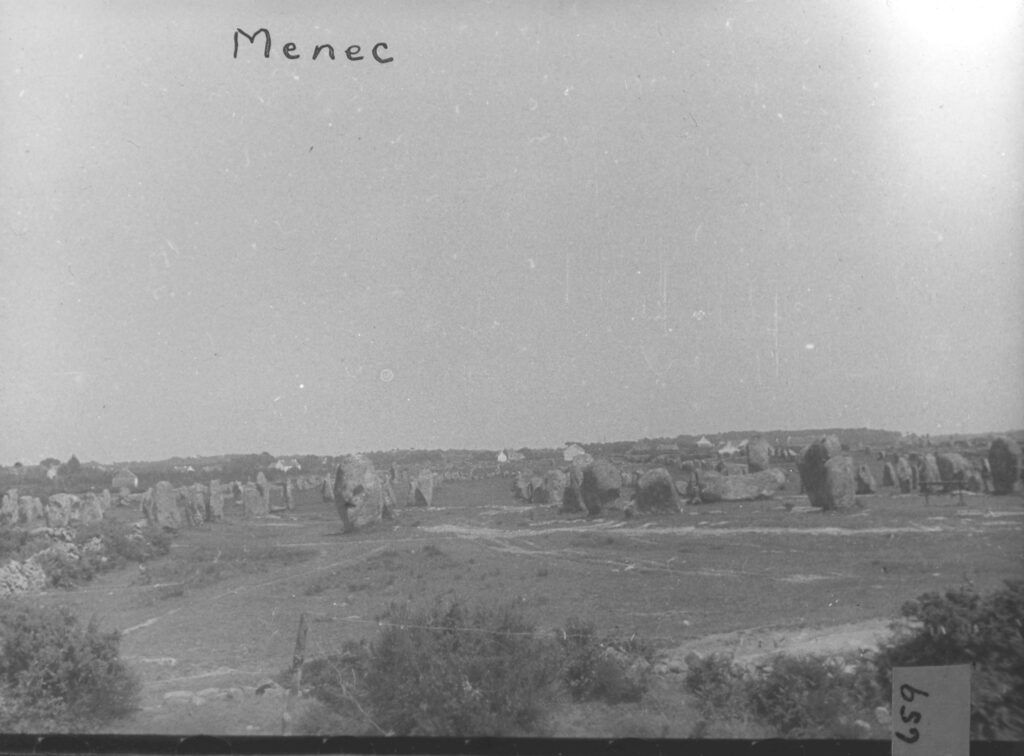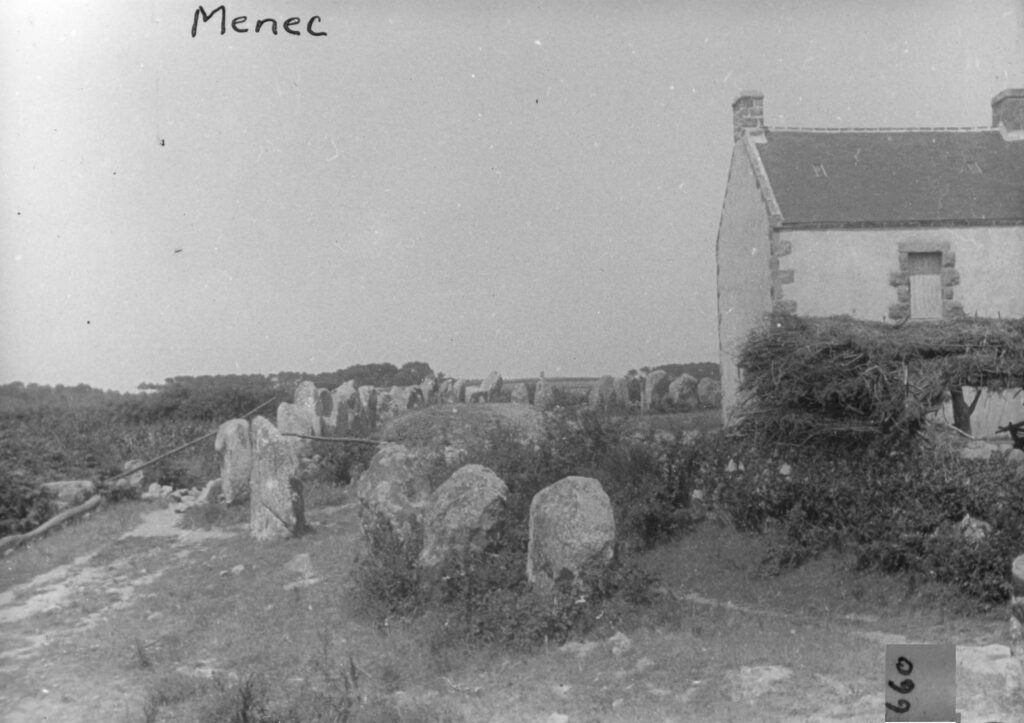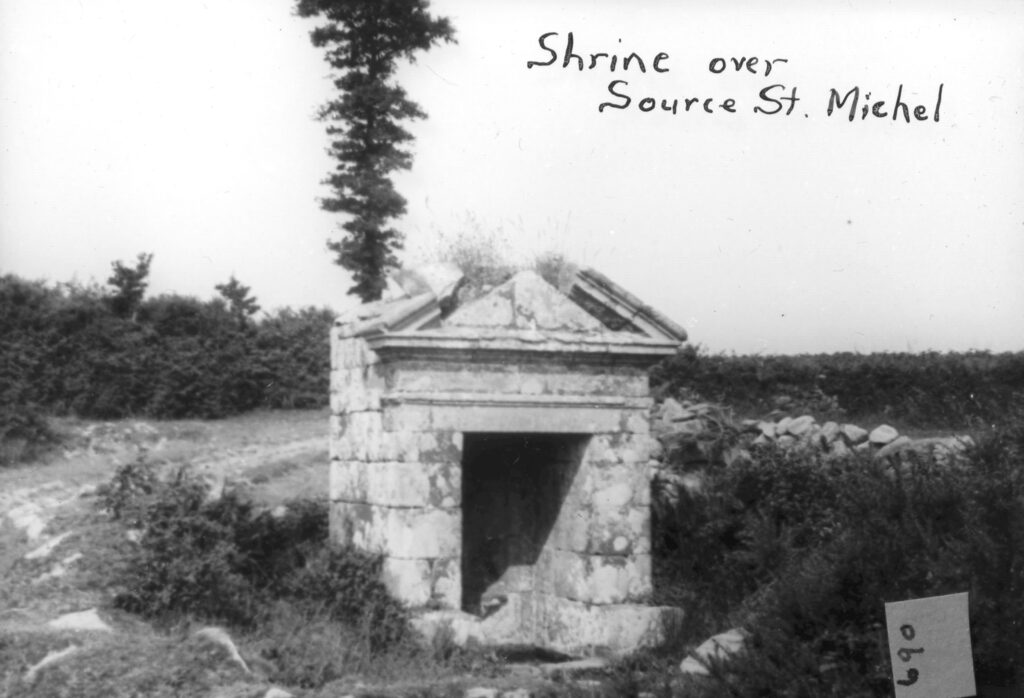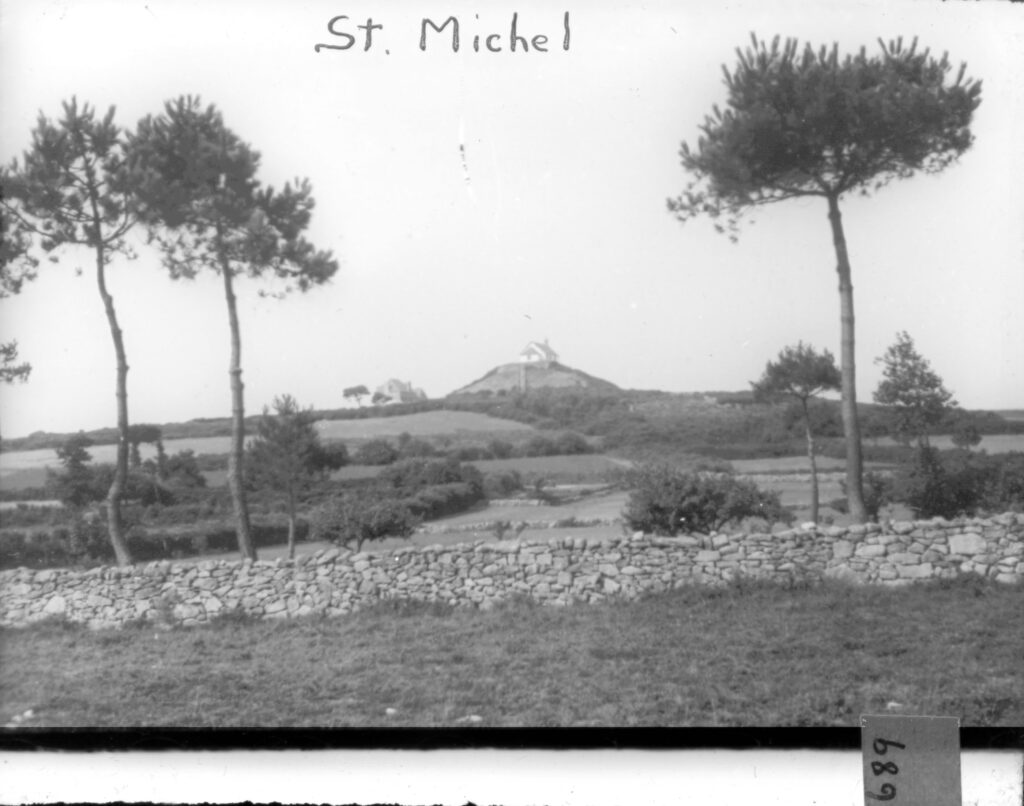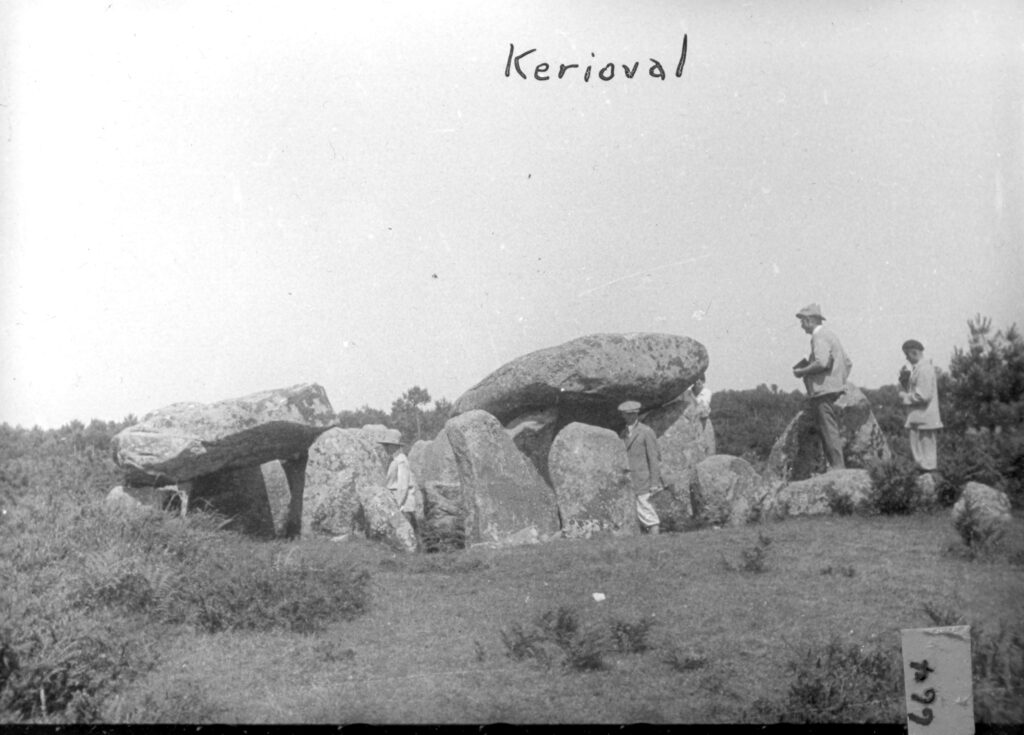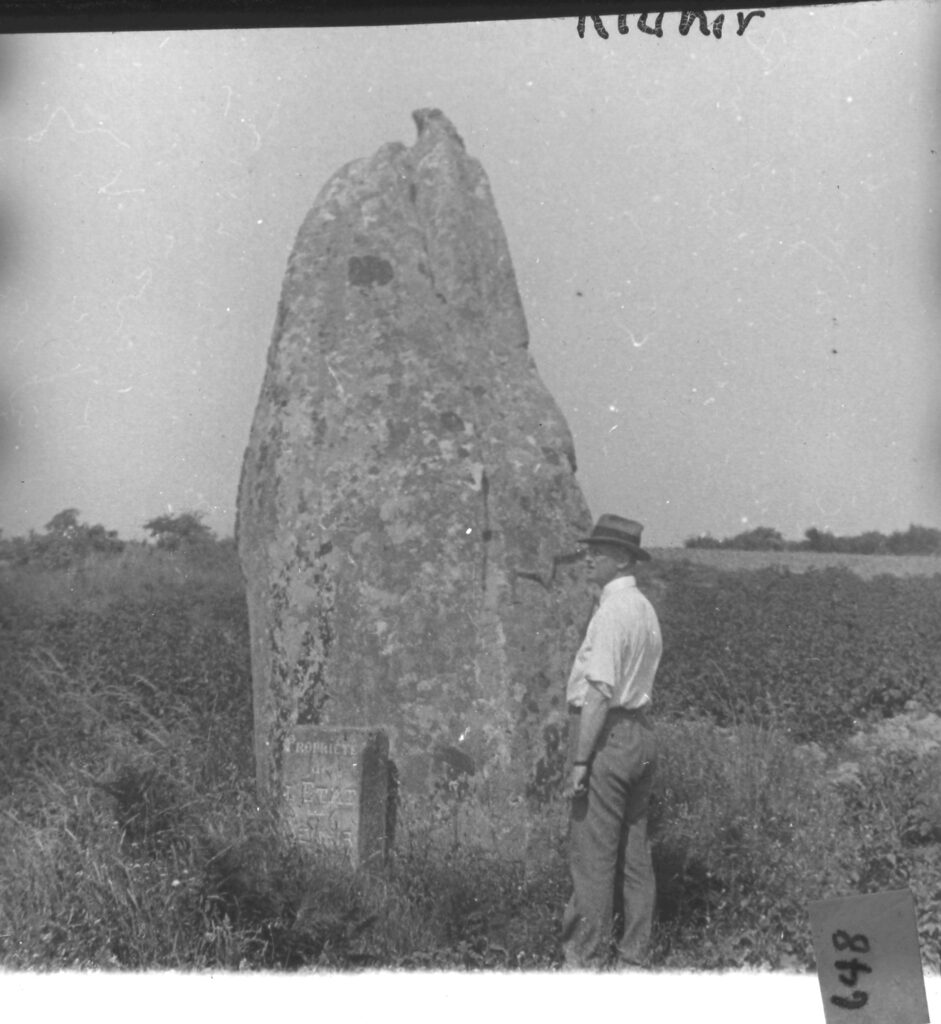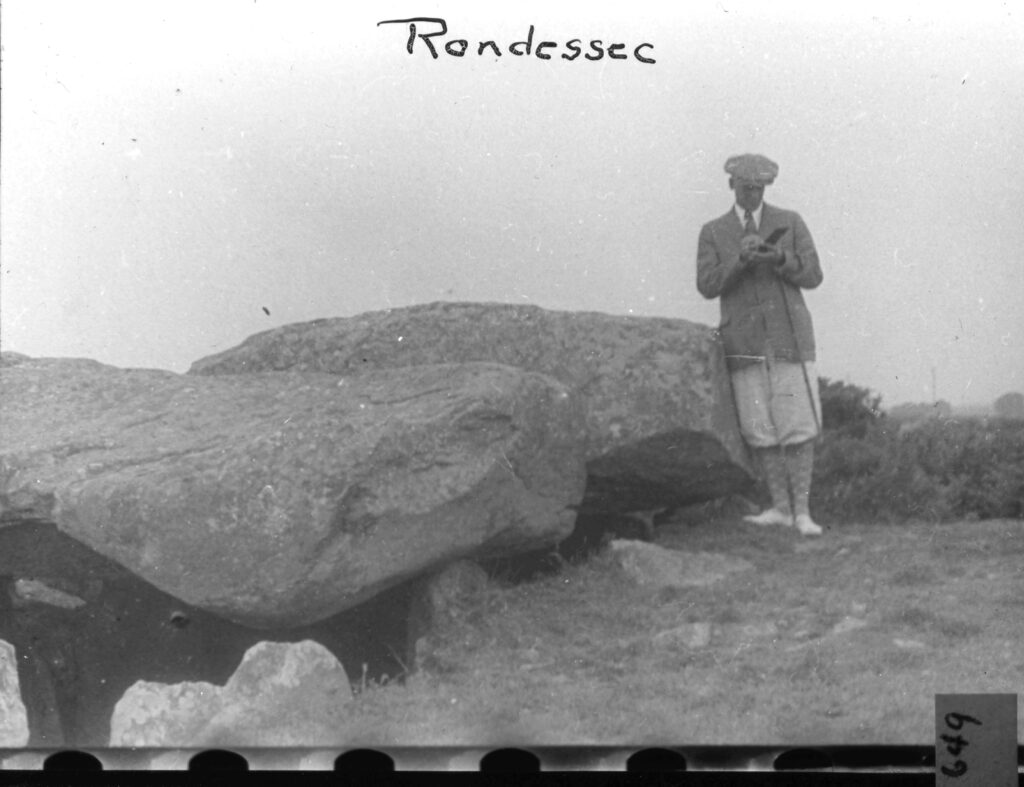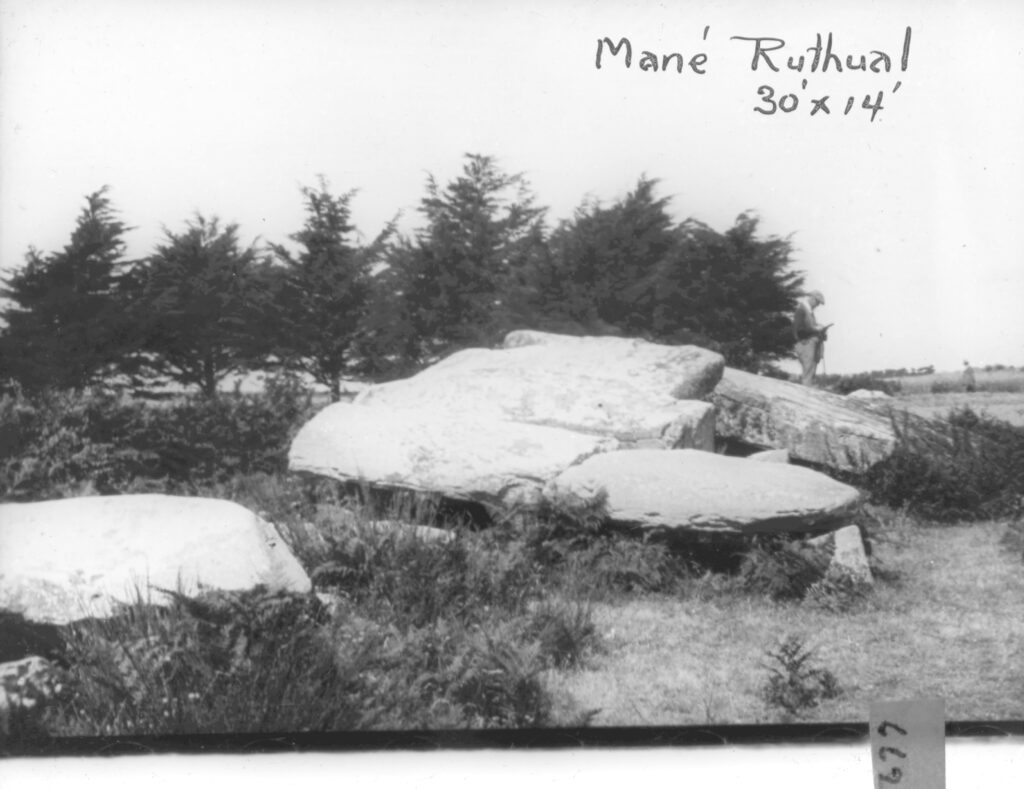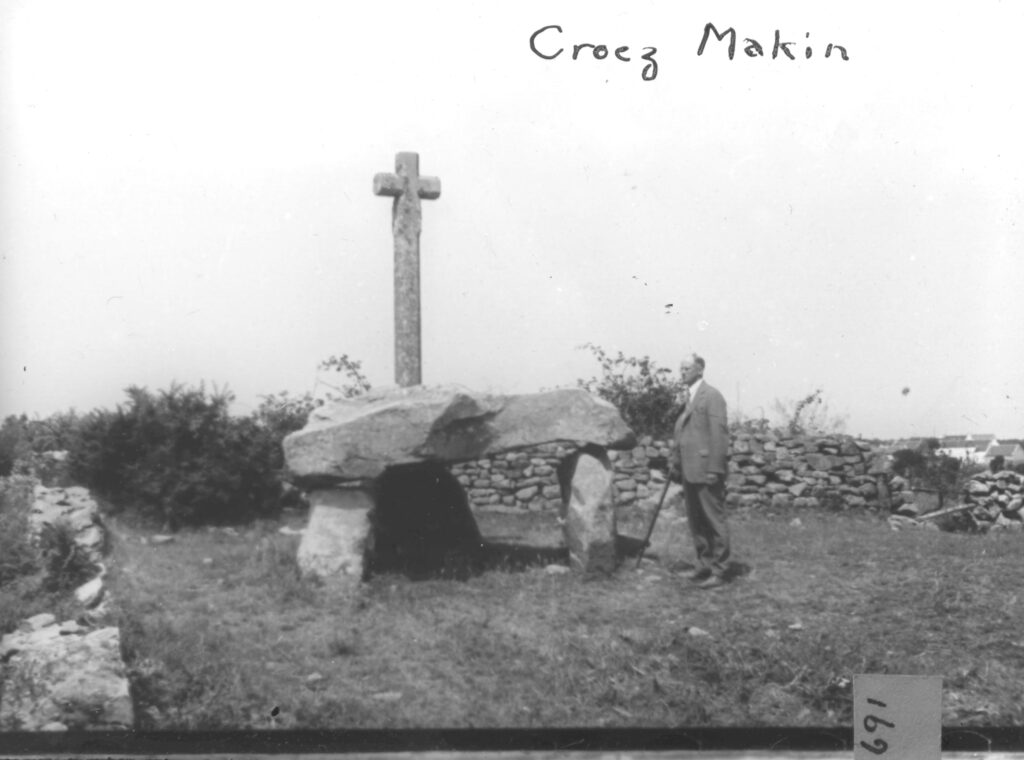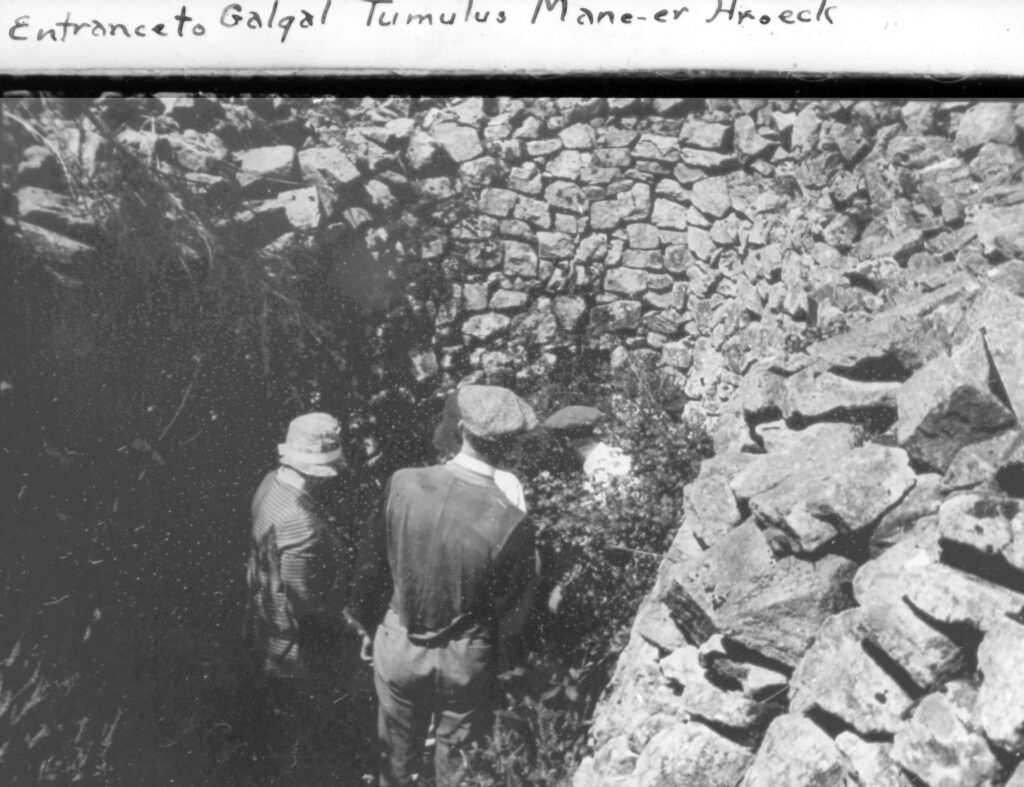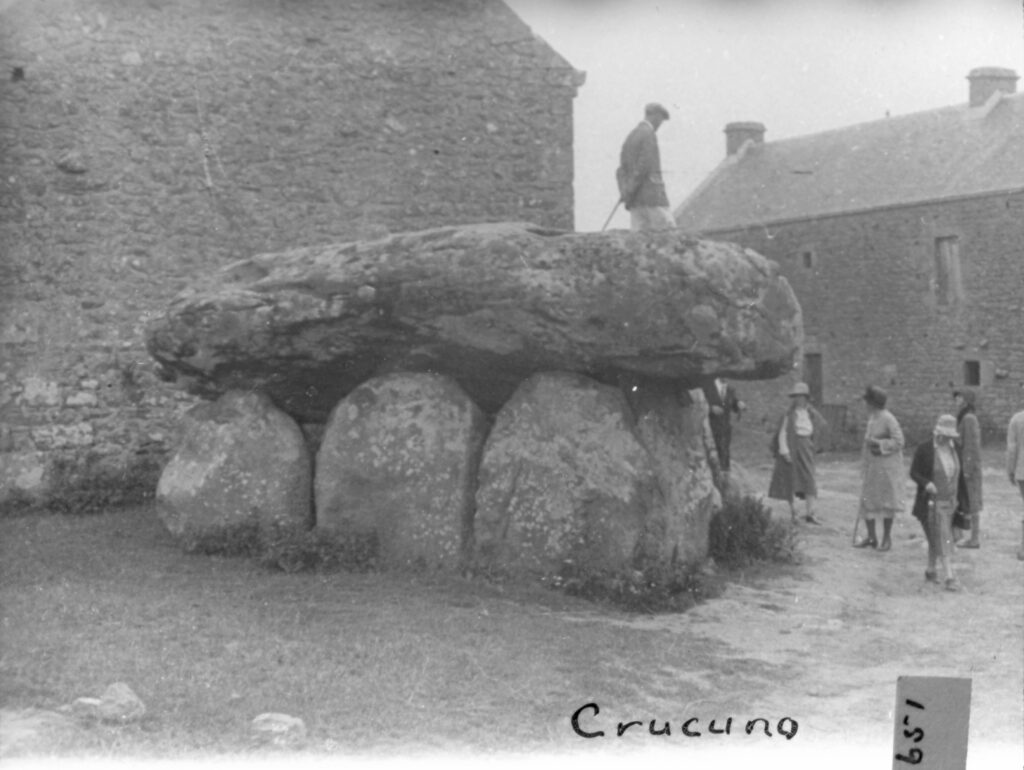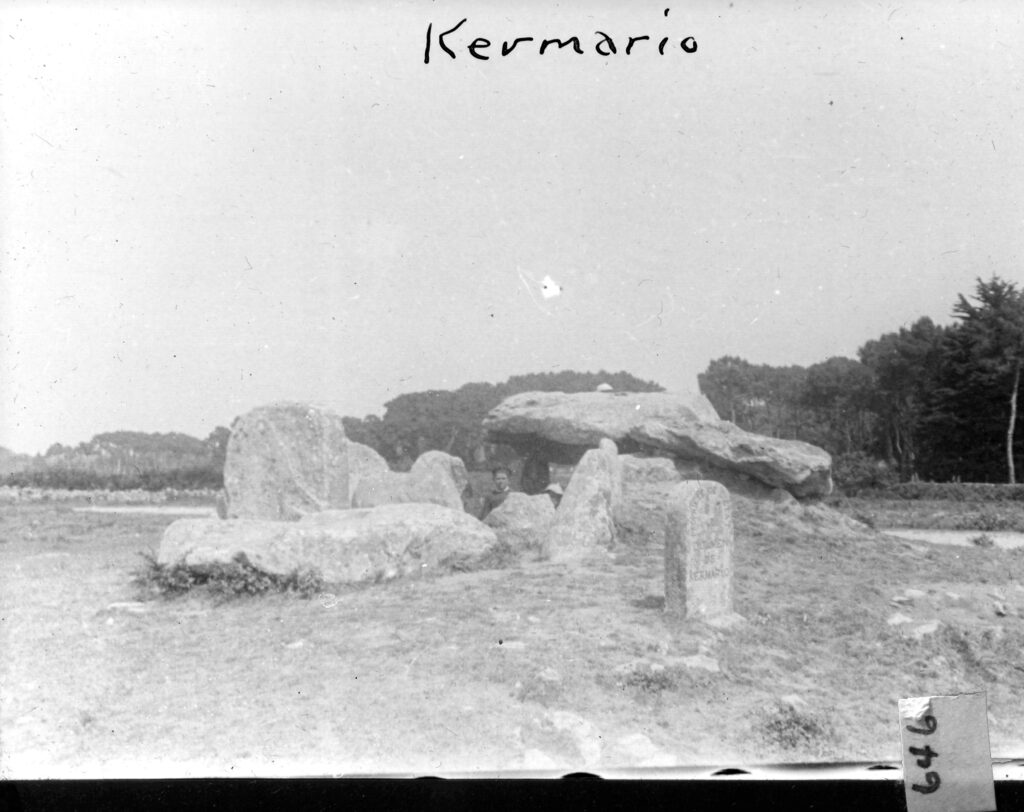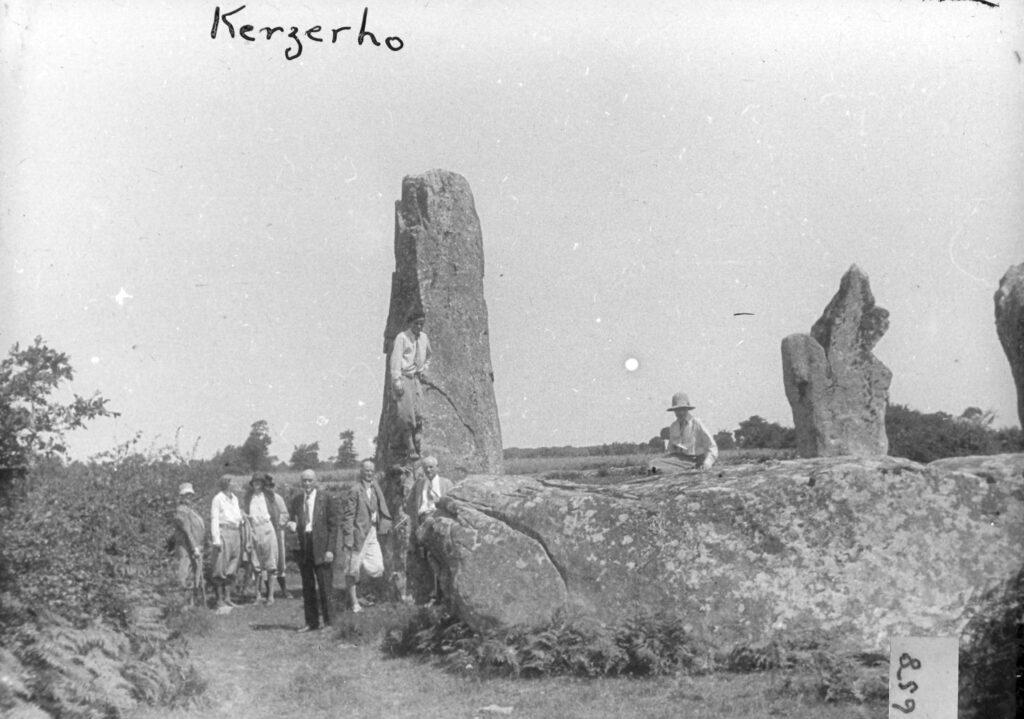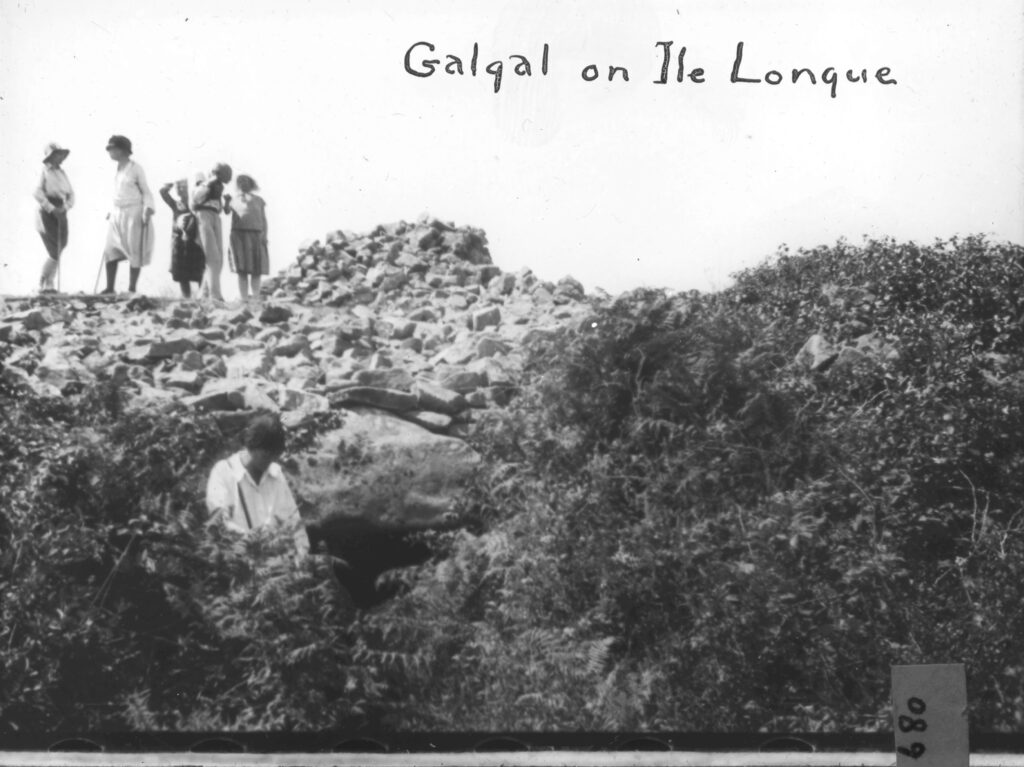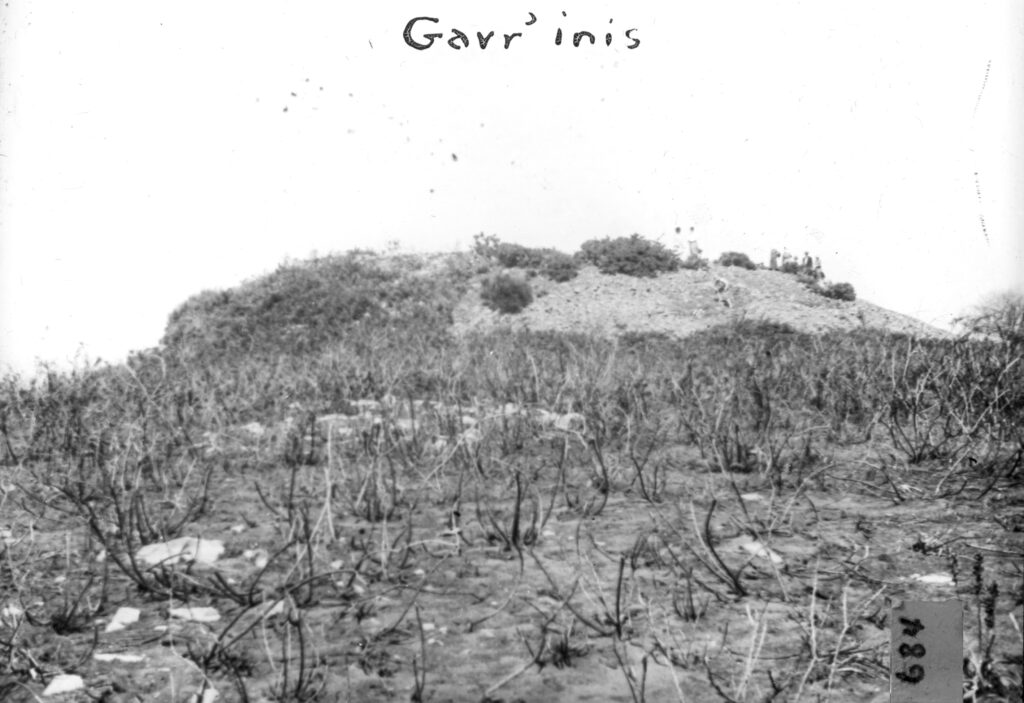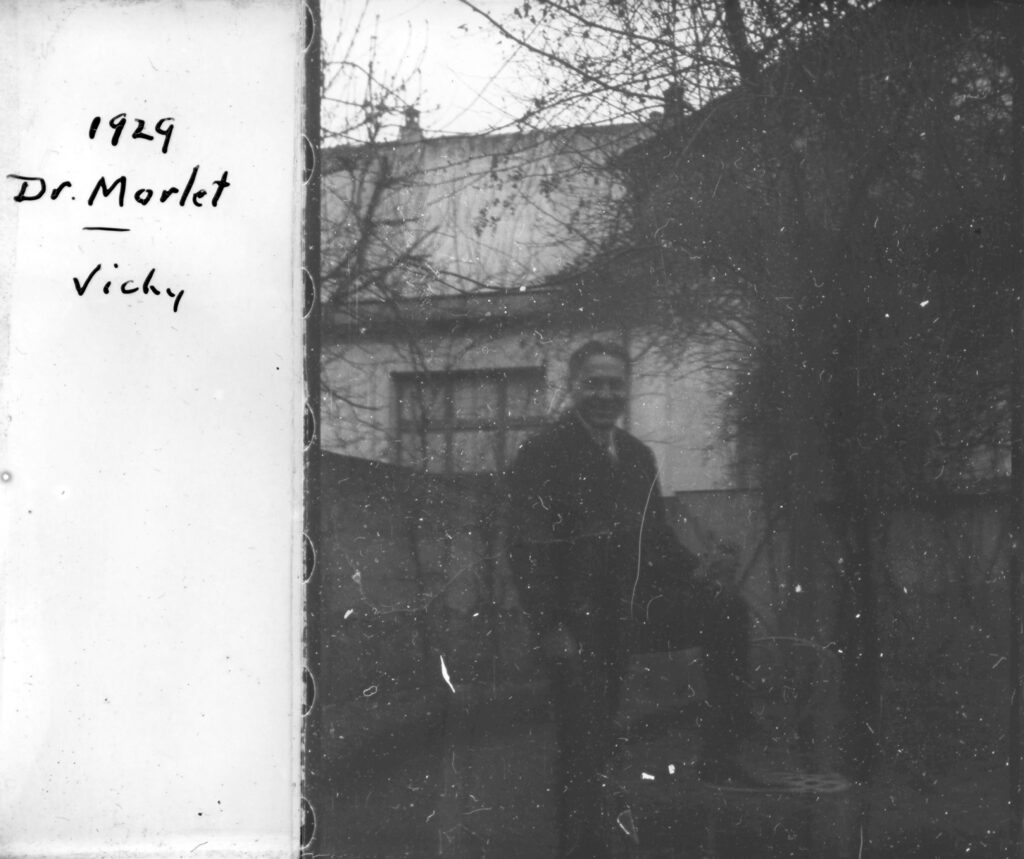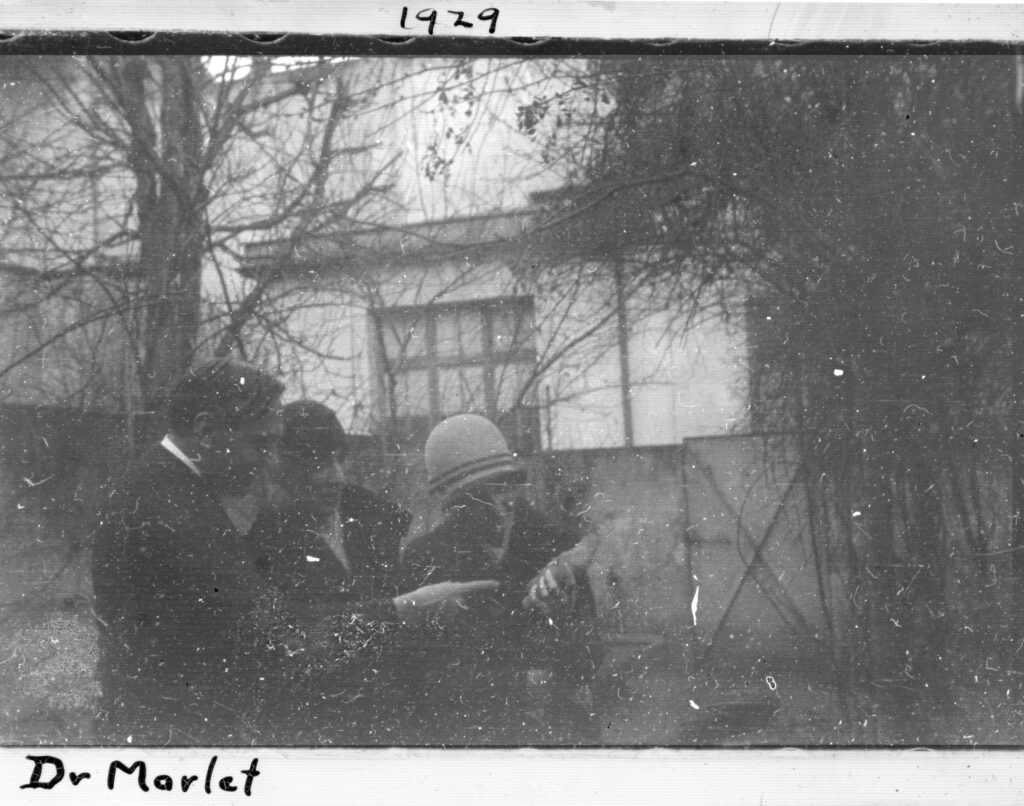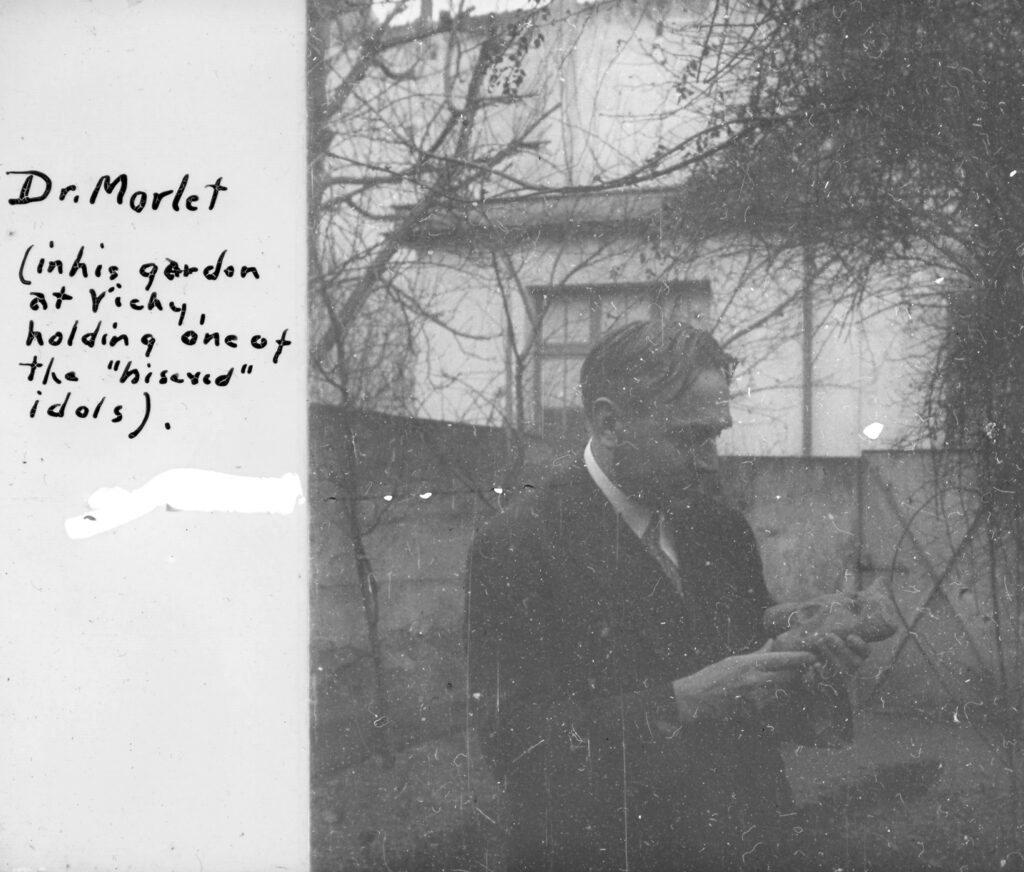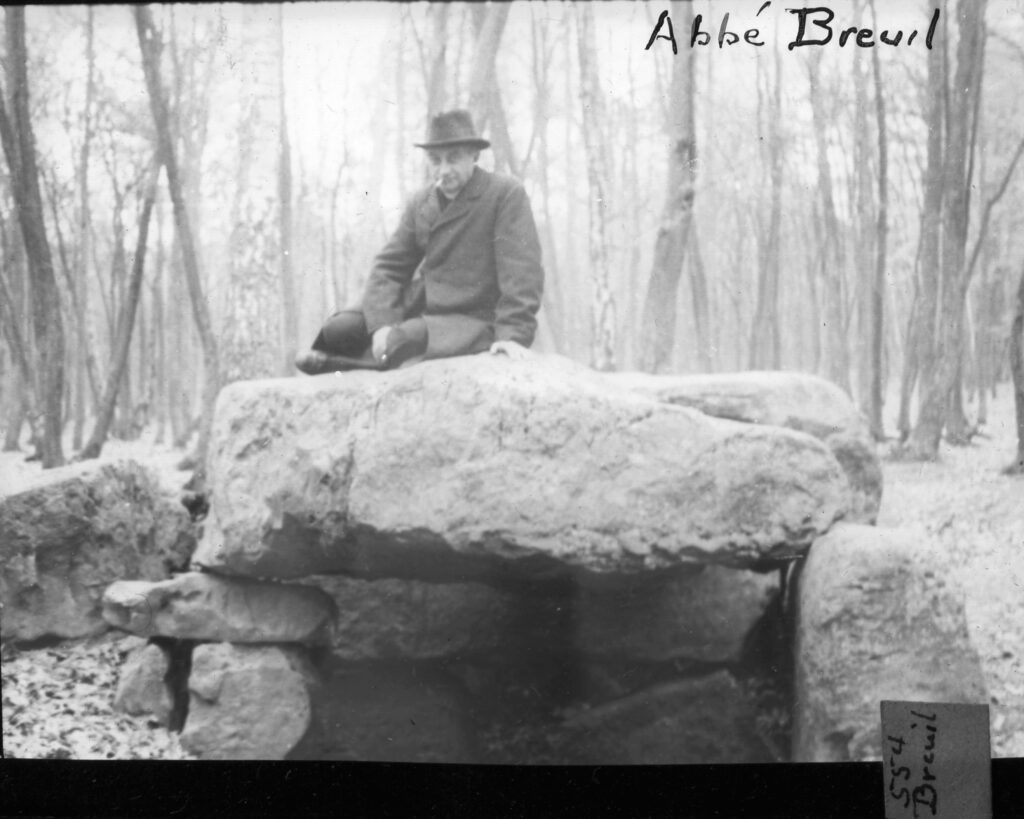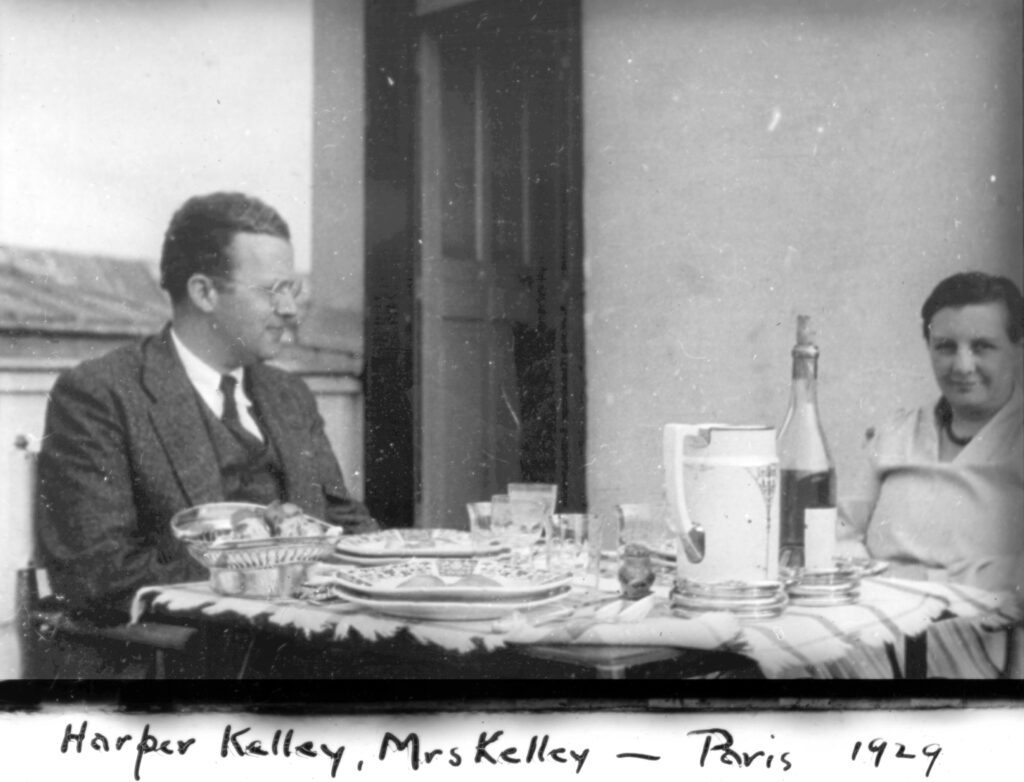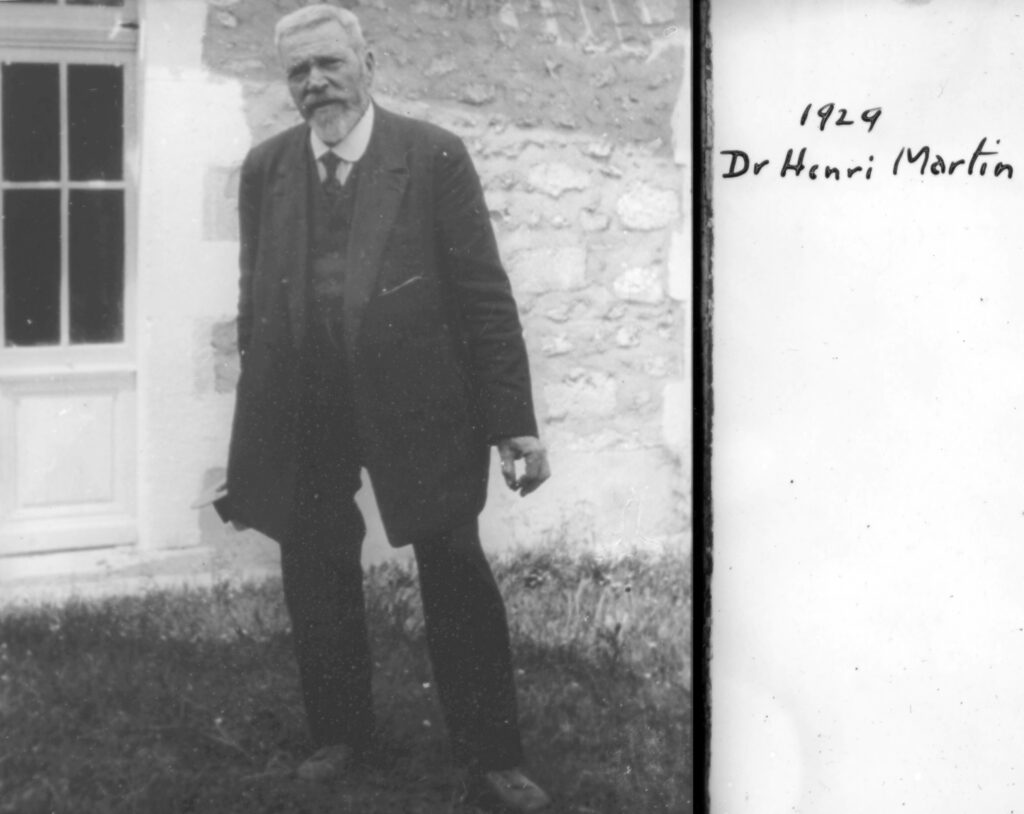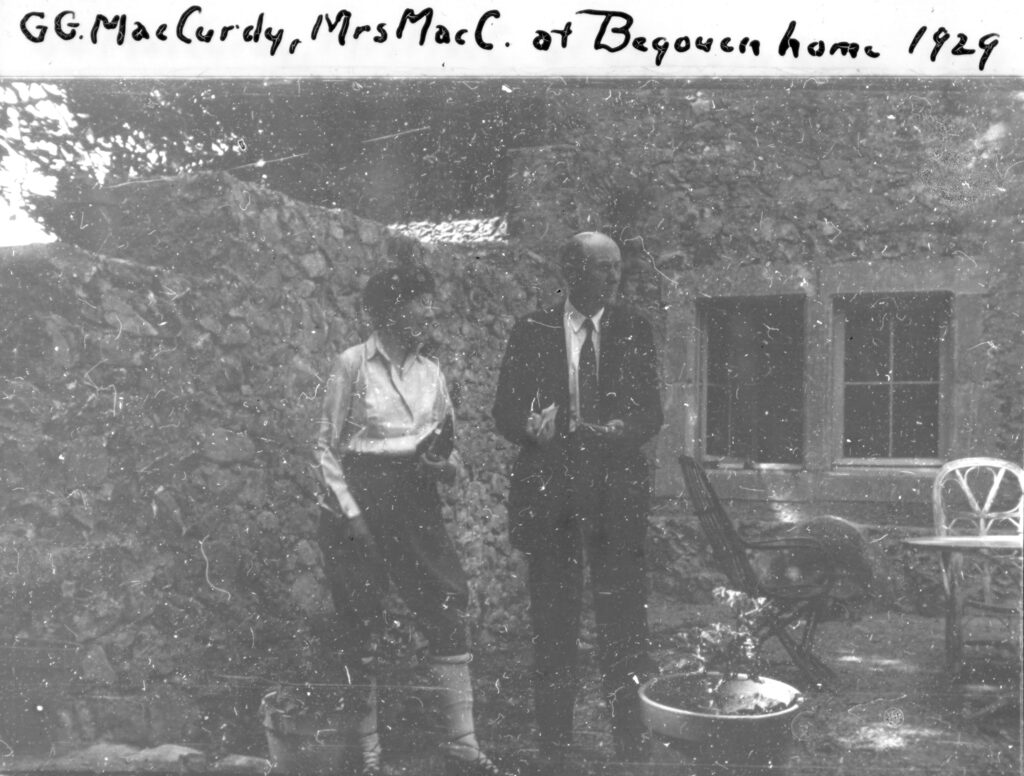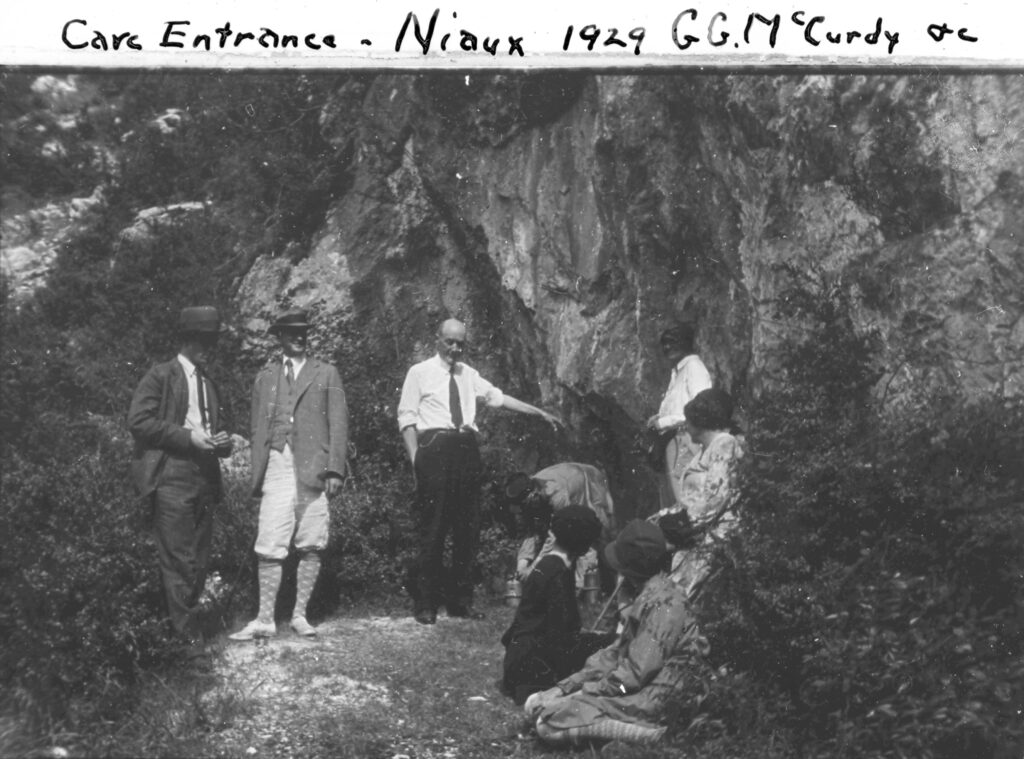Photographs from Central and Northern France
Dr. James Bullitt spent the majority of his 1928–1929 European trip in France. His journal begins in Paris in December 1928 where he visited many museums. After traveling through Italy, Germany, and Switzerland, the Bullitt family returned to France in mid-March 1929 where they remained until June. During this time, he visited and photographed several gravel pits, Glozel, and Le Roc de Sers. Bullitt returned to France with other members of the prehistory class in July 1929 and spent a few weeks touring sites around Brittany, especially near Carnac. The galleries below include all photographs Bullitt took during his time in central and northern France.
Click on any image below to enlarge it and begin a slideshow of the gallery.
Gravel Pits
Bullitt’s French companions took him to visit various gravel pits to procure Paleolithic artifacts for their collections. He described one of these visits in his journal:
“Had expected to visit several gravel pits in this neighborhood this morning & then to start toward Amiens before noon. But one pit led to another & while we did not find a great deal of flints at any of them, at each one we heard of something possibly better at another, so lunch time came before we had visited mostly all in the vicinity. Nearly all the workmen have learned to pick out of the gravel masses those flints that have some appearance of having been chipped by man, and at each pit they would have a pile of them which we would look over—or rather the Kelleys looked over them while I looked on. They got two good sized bags full in the course of the day.”
Site of Glozel
The finds at the site of Glozel in central France have been a topic of controversy and debate since they were first discovered by teenager Emil Fradin in 1924. Fradin and his grandfather said they discovered an underground chamber or “tomb” lined with bricks and filled with bones and pottery in a field near their house. The site was then excavated by amateur archaeologist Dr. Albert Morlet who uncovered an odd assortment of artifacts, including what Bullitt described as “clay tablets, crude vases (plain, and decorated with inscriptions or with eyes & nose), stone axes & pebbles with inscriptions or animal engravings, carved or engraved bone, schist rings & a few very crude flint.” Morlet identified the site as Neolithic, but he was immediately criticized by many archaeologists who believed the site was a hoax. When Bullitt visited in 1929 he recorded the controversy in his journal:
“He [Dr. Morlet] is the man who did the excavating at Glozel, having leased that site from the Fradin family about a year after the young Fradin made the first discovery of an archaeological bed. It is around him that the great controversy has raged, a few of the leading scientists believing in the genuineness of the discoveries, while most of them declare the whole thing a fraud, others calling him a dupe of Fradin. His supporters say that all their antagonism is the result of invidia doctorum, the professional publications being unwilling to admit that a ‘mere country doctor’ could have made such a startling series of discoveries. Lifelong friendships have been broken & the whole body of French scientists have been in an uproar for more than a year.”
Bullitt himself did not believe he could tell if the site was a hoax or genuine. More recent analyses also have not agreed on the validity of the site. Neutron activation analysis and carbon dating in the 1970s associated the artifacts with the Late Iron Age and Gallo-Roman periods as well as some from medieval and post-medieval contexts. It does not appear to have any Neolithic contexts despite Dr. Morlet’s conclusions.
Site of Le Roc de Sers
Le Roc de Sers is a Soultrean period (17,000 to 21,000 years ago) rock art site in Charente, France, excavated in part by Dr. Léon Henri-Martin between 1907 and 1933. More of a rock shelter than a cave, the site is filled with over 50 carved images, mostly animals, including a 33 ft long frieze. Horses dominated images in the eastern section, while ibexes dominated the western half. Bullitt described in his journal how Dr. Henri-Martin first discovered the frieze:
“A frieze of carvings had evidently ornamented the face of the cliff just above this workshop; but these had fallen face downward upon the platform & Solutrean deposits were found both below & above these blocks of carved stone. This dated them as unmistakably Solutrean, the first instance of sculpture of that period ever found.”
The left photo in the second row below shows a carving described by Bullitt in his journal as: “Another relief carving shows two figures, a man with a club over his shoulder and some sort of bovine, probably musk ox—or rather musk cow…Abbé Breuil interprets this as a man running away from a charging bovine. This doesn’t seem to me correct.. It seems to me that the man is preparing to attack an unsuspecting, grazing cow.”
The left image in the third row below depicts a bison with a boar’s head, something Bullitt remarked upon saying: “A bison (about three feet high) had been carved in the high relief (about 3 inches). The old outlines are still recognizable, though a later artist had converted the bison into a pig by a chipping off part of the shoulder hump and the bulging forehead & horns & part of the muzzle; but he evidently thought that the bison’s tail and feet could pass muster for a pig.”
The one drawing included in Bullitt’s photos, center image in the third row, is of a carving that Dr. Henri-Martin had just recently discovered in 1929: “About three weeks ago he found another large block, (about 5 x 3 ft) in the old debris, some distance below the other blocks. It shows a fine sculpture, or rather engraving, of two goats in combat, their heads just meeting after a charge. It has not yet been published & hence is not a subject for conversation.”
While digging at Le Roc, Bullitt described his encounter with Dr. Henri-Martin’s donkey, Koko: “When we were through eating, the scraps were doled out bit by bit to Koko, Dr. M’s little donkey, who had watched us hungrily but silently during our meal, but begged piteously for food, in the very best of asinine French, as soon as we rose from the table. He enjoyed the remnants of bread & strawberries, but was wild with delight over the half glass of wine. Dr. M. says Koko is a joyful toper & would get drunk daily if the opportunity were provided.”
Dr. Henri-Martin would continue digging at Le Roc for four more years after Bullitt’s visit, concluding in 1933. After World War II, another group of archaeologists that included Germaine Henri-Martin, Dr. Henri-Martin’s daughter, resumed excavations and found even more carvings.
Sites around Brittany
While in England, Bullitt joined a class, the American School of Prehistory at the American University Union, that intended to travel to sites in France and Spain under the leadership of Dr. George MacCurdy, an archaeology professor from Yale University. They traveled to Carnac in Brittany, France, and stayed there for 16 days visiting various megalithic stone monuments in the region. Bullitt extensively photographed these sites. Here is just a small selection of excerpts describing his time near Carnac. To learn more about Bullitt’s observations, read his letters from July 1929.
“We ranged through a quarter circle to the south and found two dolmens and several isolated menhirs and a couple of menhir groups (‘alignments,’ i.e. rows of megaliths). Each consisted of seven rows of these stones, from three to ten or twelve feet high, extending in one case about three hundred yards & in the other more than twice that far. There are several hundred stones in each group. I took several photographs which I hope will prove good.”
“Another dolmen (the Pierre Chaude) has a slightly sloping roof and tradition says that the maiden who slides down the slope will marry within the year. So of course we insisted that Miss Allyn & Dr. (Miss) Hackett try the experiment in spite of their mature years. Now let us see the result! I photographed each of them in the act and promised a copy when I receive the wedding invitation.”
“We visited many of the famous megalithic structures but it would take to [sic] long to describe them. During the morning we saw the dolmen of Mané Leed whose single roof stone measures more than 24 by 14 feet & is about 4 ft thick; also the Table des Marchands whose top it is almost as large & is even thicker; near this is the long tumulus of Er-Grab, at whose foot lies the giant fallen menhir, 69 ft long which was thrown down & broken by an earthquake many years ago. The fragments lie where they fell. At the base it must be 12 or 14 feet thick. A little further is the dolmen Pierres Plates and also Mavé Ruthual with a roof stone 28 x 13 ft. We ended the morning at tumulus Mavé-Er-Hroeck—a small passage & chamber under a huge ‘gal-gal’ of stones”
Note: Some of the site labels on the photographs are misspelled. The Klescau Alignment is really the Kerlescan Alignment; Grucuny is the Crucuny Tumulus; and Kerioval is correctly spelled Kériaval.
French Islands
While staying at Carnac, Bullitt and other members in the prehistory class traveled to a number of islands off the coast of Brittany. He described this trip in his journal:
“Here we left the car and ventured out in a fishing boat with a green sail and a sputtering motor. This took us to the tiny Ile Longue with its great ‘gal-gal’ tumulus, and then to another island on which is the tumulus of Gavr’inis. Every large slab in the wall of its passage (was perhaps 60 ft long) and every wall stone in the 10 or 12 ft burial chamber shows elaborate carvings (axe & shield and so-called finger print designs). This has more of this carving than any other known dolmen or tumulus except some in Ireland. On the neighboring island of Er-Lannic we stopped to see the remains of a great cromlech, about half of which extends into the bay & is partly covered at high tide. As the tide was in this afternoon some of the stones was [sic] entirely covered & some others showed only their tops. This coast has evidently sunk a good many feet since these stones were erected four or five thousand years ago. The beach is littered with fragments of pottery & flint chips. Little picked up a beautiful polished amulet-axe of fibrolite, about 1½ inches long. Miss Allyn and MacCurdy each found a good flint grattois & I picked up a good granite axe-hammer, which I lost on the way home. We were there only about 20 minutes. There is another cromlech nearby, but it was entirely submerged. It is only visible at low tide. The tides here are 10 or 12 feet.”
People Bullitt Encountered in France
Bullitt took photographs of the people he worked and traveled with during his trip. Dr. Albert Morlet was a surgeon and amateur archaeologist who ran excavations at Glozel. He was a controversial figure as some thought the finds at Glozel were a fraud. Bullitt visited Morlet in March 1929 to see his collection and get a letter of introduction to the owners of Glozel to visit the site. Henri Édouard Prosper Breuil, known as Abbé Breuil, was a French priest and was one of the most well respected archaeologists on cave art during the early twentieth century. He was one of Bullitt’s main teachers and informants while in France. Harper and Alice Kelley were an American couple from Cincinnati, Ohio, in the US who were in France studying prehistory and archaeology under Abbé Breuil. They were Bullitt’s main companions while in France and he spent many days working with their collection in Paris. Dr. Henri Martin led excavations at Le Roc de Sers and La Quina, important Paleolithic sites in France. The home of Comte (Count) Begouen and his family near Mas D’Azil was visited by Bullitt and other members (including the MacCurdys) of the prehistory “field school” touring southern France and Spain. Dr. George MacCurdy, an archaeology professor from Yale University, led the class.
Bibliography
http://www.badarchaeology.com/controversies/laffaire-glozel/

